Students at Life Learning Academy are disconnected – literally and figuratively. Many of the students live on campus, located on Treasure Island in the San Francisco Bay. Also, students arrive after experiencing life traumas, often involving the juvenile justice system, and not finding success in traditional school settings.
Kevin Hicks arrived at Life Learning Academy with his own unique trajectory, including growing food at a commune in the foothills of the Rocky Mountains, founding a rowing studio gym, and working as laboratory scientist at the United States Department of Agriculture.
The common denominator between students and teacher? According to Kevin, meaningful connections, worldly lived experiences, and adventure — the same components of a Fund for Teachers fellowship.
Last summer with a $5,000 Fund for Teachers grant, Kevin participated in the Marine Conservation program hosted by Global Vision International in Puerto Morelos, Mexico, to support the management and conservation of the Mesoamerican Barrier Reef. Working alongside national and international non-profits and government organizations, Kevin collected data, participated in coral nursery and management and joined beach clean-ups in the Mexico Caribbean Marine Biosphere Reserve, which is one of the largest ecosystems globally, and the largest national marine biosphere reserve in the Caribbean.
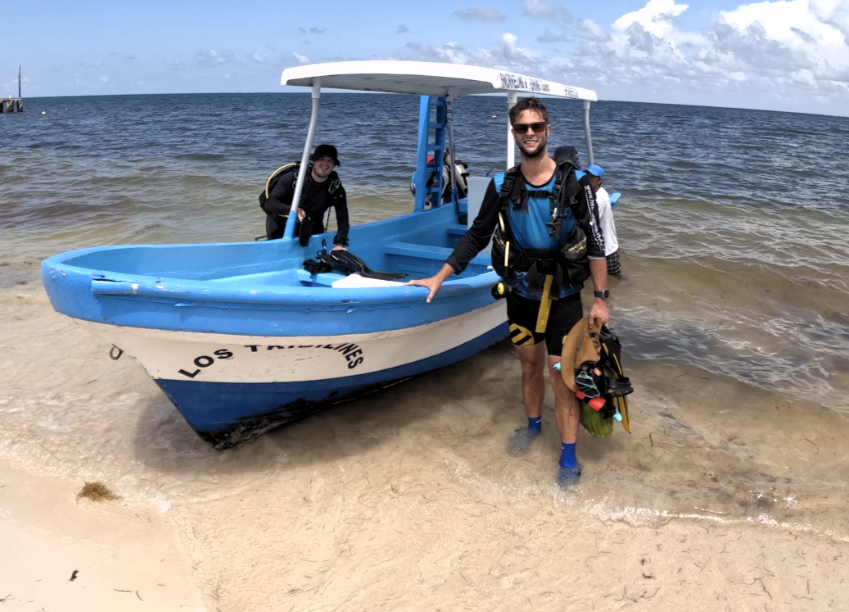
Afterwards, he studied Spanish with a tutor in Quintana Roo, improving fluency to better teach one-third of his students who are Spanish speaking.
“I got to see ‘Science as a human endeavor,’” said Kevin. “As humans, we have limited capacity. It made most sense to train us to be able to identify selected target species [such as sea turtles]. This way we focused on specific species that provide crucial data.”
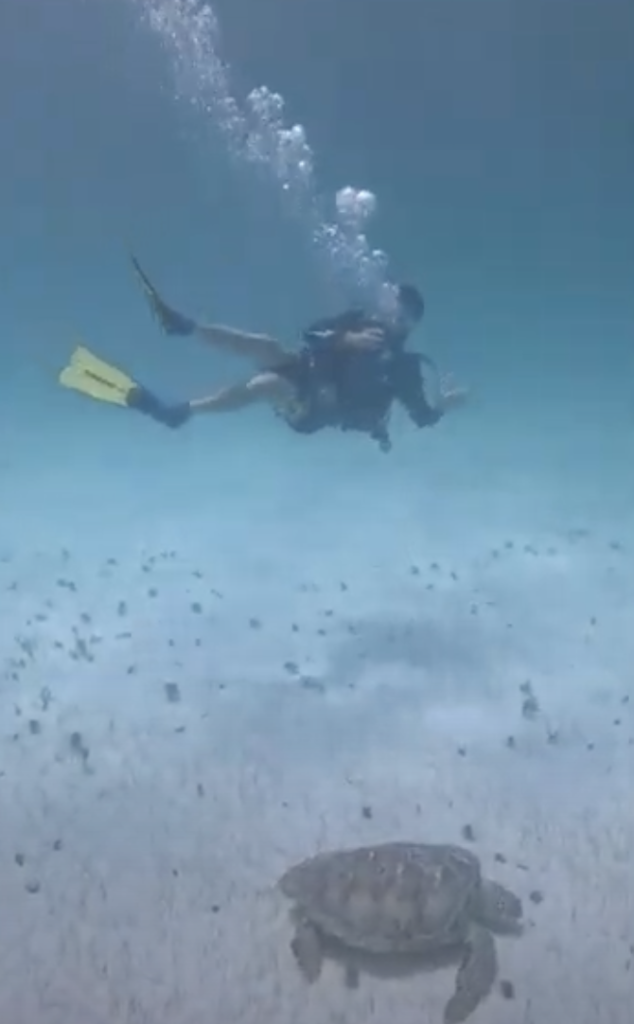
Kevin relies on a similar targeted approach when teaching his “Earth Optimism in Action” ecology class, focusing on specific issues that provide opportunities for collaboration and change.
“My students choose a local environmental issue for which I supply 1-2 resources for them to contact for more information,” explained Kevin. “As the name of the class implies, they are empowered to take action and reach out to local organizations for more information. Their final project will be an ‘Action Plan’ with the help of the local agency to address the issue at hand. My fellowship will be used as my example for their final project.”
Through this class (and his fellowship), Kevin models more than environmental stewardship and hands-on science. He exemplifies for his students Life in Action.
“As an educator, it is my responsibility to be a role model, and I would like to be a role model of a global citizen who takes action in the world for the things that I care about,” he said. “I deeply care about our natural environment, and particularly the oceans’ health. I want to show my students, by my actions not just my words, that their actions matter.”
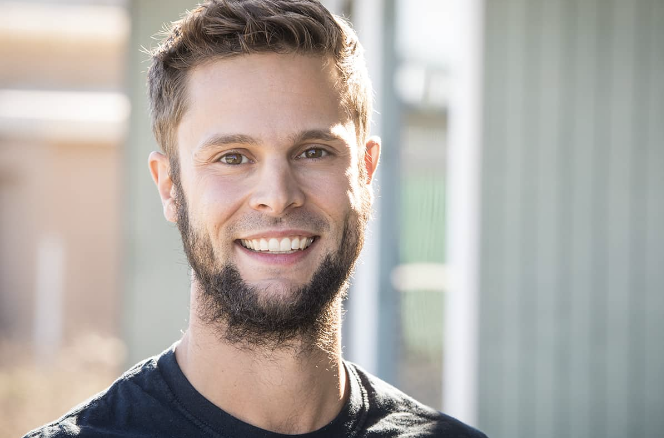
Kevin Hicks became a teacher through the US National Science Foundation’s Robert Noyce Teacher Scholarship Program. He also serves as director of education and first mate for Sea Valor, Inc., a nonprofit dedicated to improving life quality for Veterans, First Responders, those with PTSD and families affected by suicide.
Fund for Teachers, one of the nation’s leading organizations supporting preK-12 educators, is proud to announce its 2025 grant recipients. This summer, 357 teachers will leverage $1.625 million into experiential learning in 79 countries on 6 continents.
These educators comprise Fund for Teachers’ 25th cohort of FFT Fellows. Since 2001, Fund for Teachers has invested $39 million in 10,225 public, private and charter school teachers from across the United States.
Fund for Teachers annually invites teachers to propose solutions that address learning gaps for themselves and their students. Teachers are trusted with the freedom to determine what and where they want to learn and, after a thorough review process, individual teachers are awarded up to $5,000 and teams of two or more up to $10,000 to pursue customized professional development during the summer.
Fund for Teachers annually invites teachers to propose solutions that address learning gaps for themselves and their students. Teachers are trusted with the freedom to determine what and where they want to learn and, after a thorough review process, individual teachers are awarded up to $5,000 and teams of two or more up to $10,000 to pursue customized professional development during the summer.
“Teachers are at the heart of shaping not only students’ academic trajectories, but often also their social and emotional well-being,” said Karen Eckhoff, Executive Director. “Fund for Teachers believes this high calling merits validation and support, which we provide by funding fellowships that ultimately inspire teachers’ enthusiasm for student engagement and extend their longevity in the profession.”
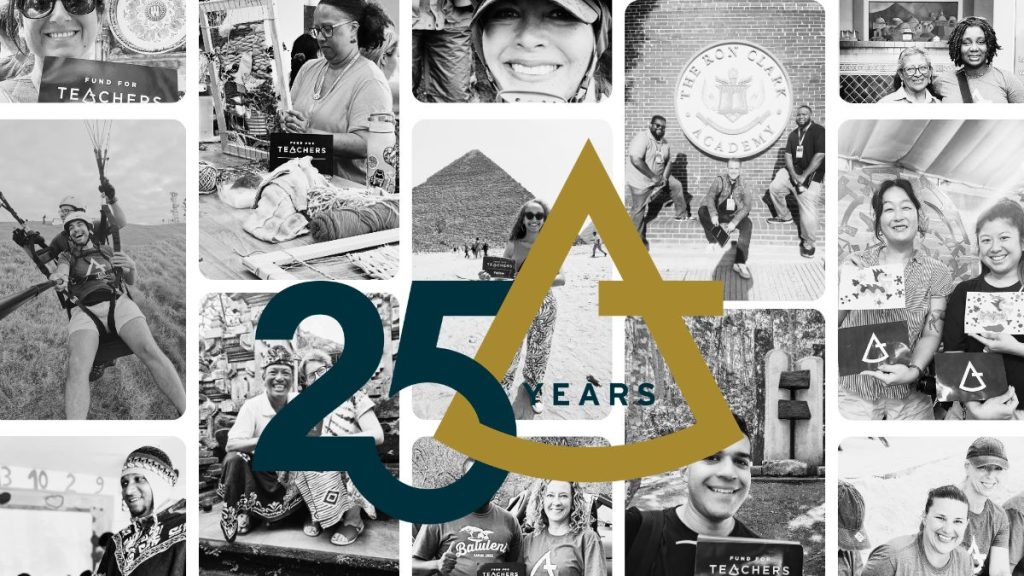
The town of Roseburg, Oregon has a few notable distinctions – the subject of the Johnny Cash song “Lumberjack” and home to a pack of feral angora goats that predicted weather in the 1980s – but a diverse demographic is not among them. The county seat is 91% white and the students at Roseburg High School mirror that statistic. In this homogeneous milieu, social studies teacher (and Roseburg native) Ashley Painter was tasked with crafting Music History and Native American Studies courses, she used Fund for Teachers to orchestrate it.
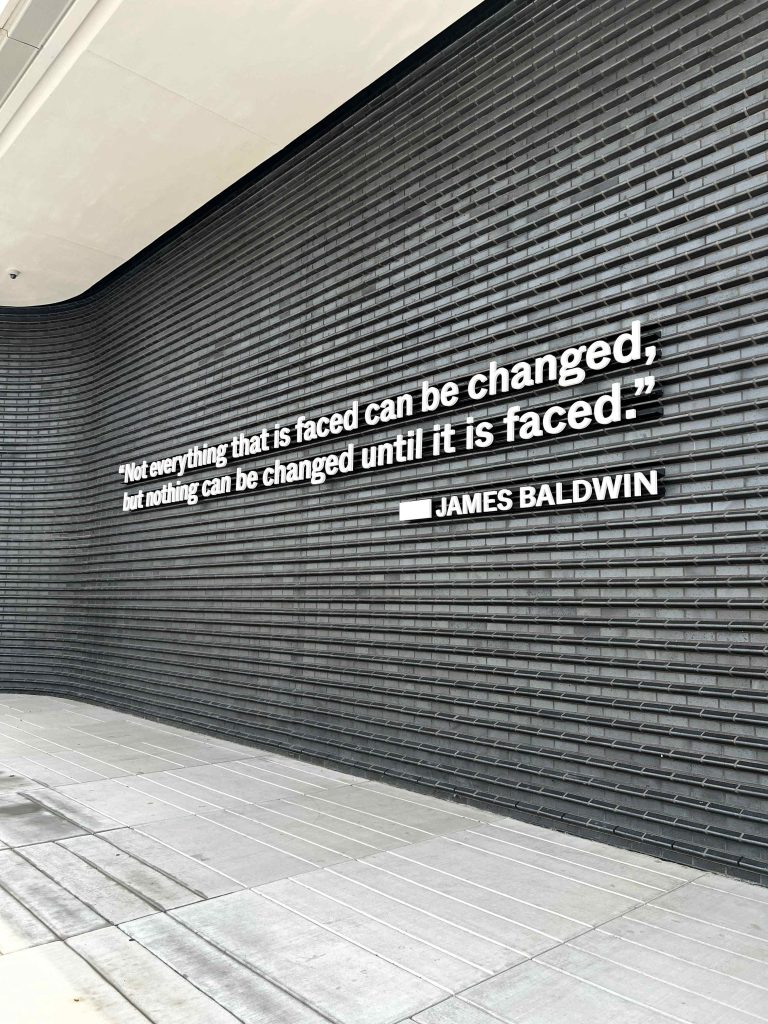

“My $5,000 grant funded a road-trip focusing on historic sites in America’s South and Midwest that highlight Civil Rights, Native American, and musical history,” said Ashley. “While my motivation for this fellowship came from a passionate and emotional appreciation for these cultures and historical content areas, there are also several new standards in Oregon that this project helped several courses meet.”
On the road, she toured the Greenwood Rising Museum & Black Wall Street History Center in Tulsa when documenting country music. She walked around Whitney Plantation and Congo Square while seeking out jazz history in New Orleans.
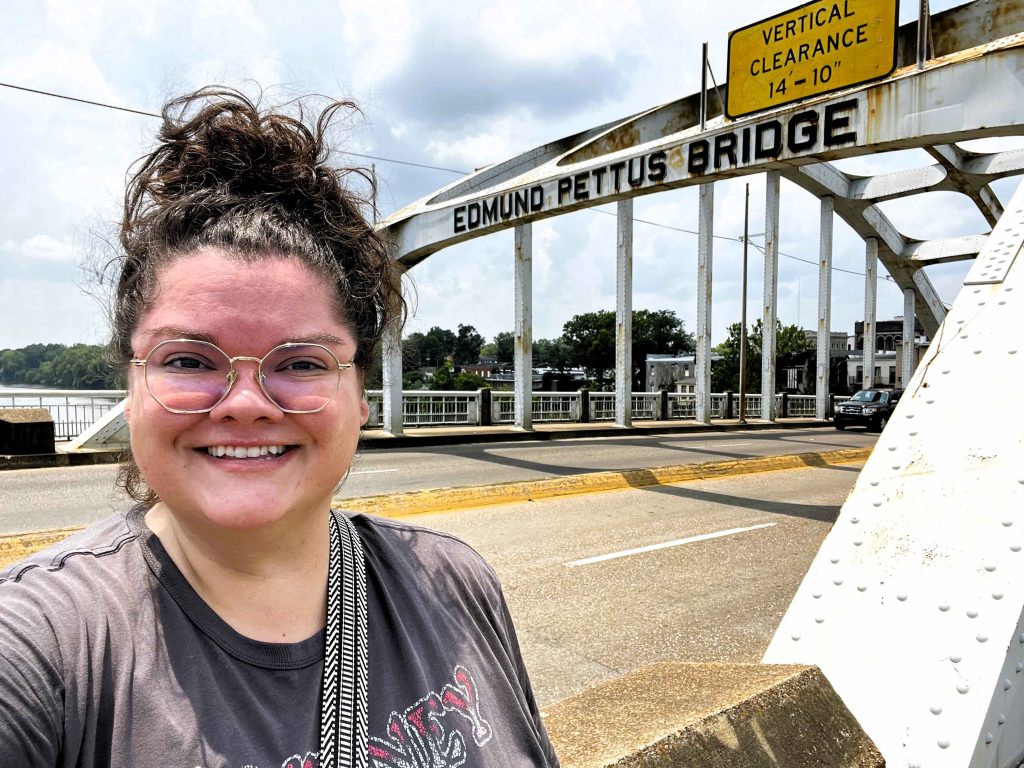
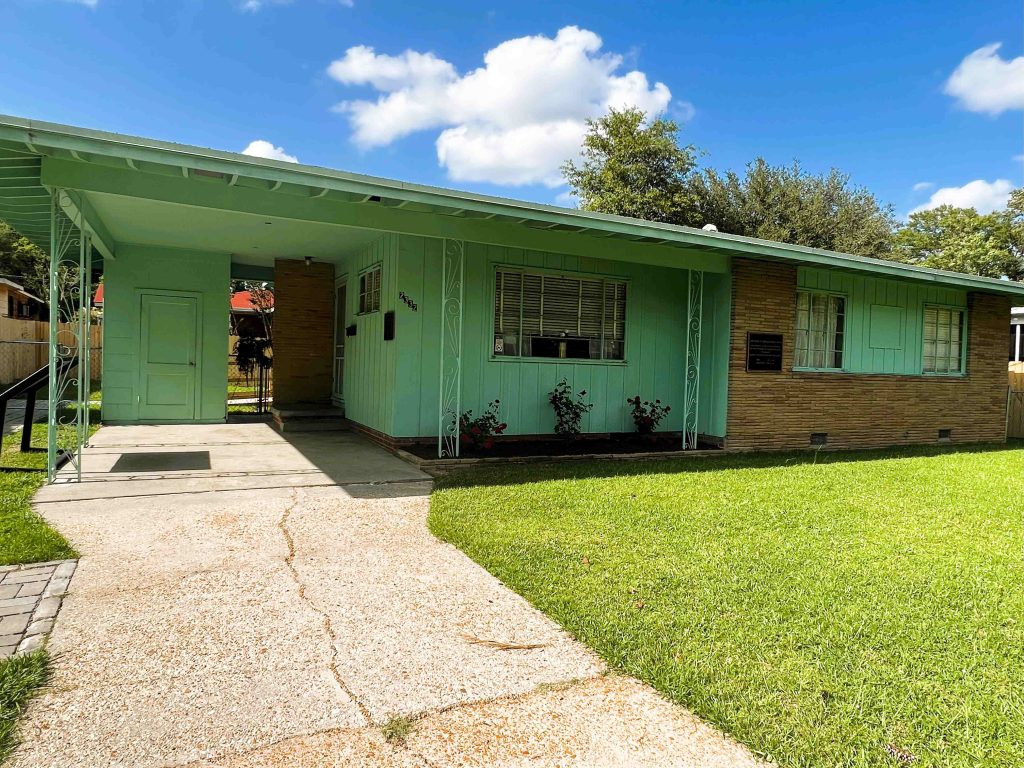
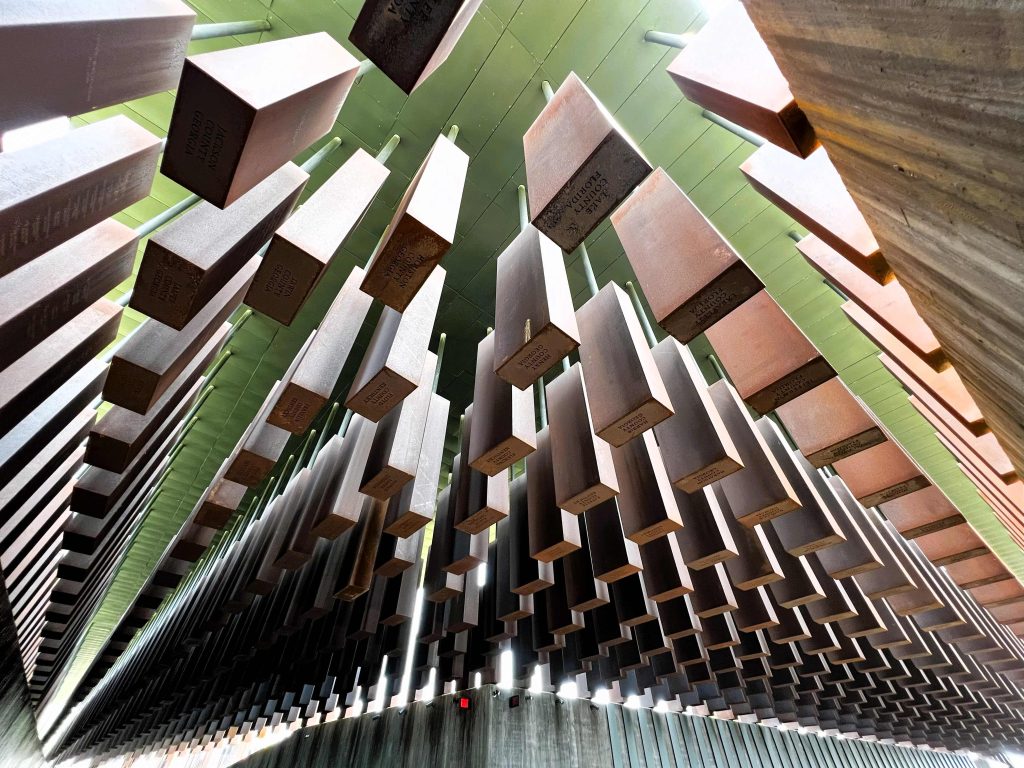
She crossed the Alabama River on the Edmund Pettus Bridge and toured the National Memorial for Peace and Justice. She stopped at the Mississippi Civil Rights Museum and Medgar Evers’ home while following the Mississippi Blues Trail and visited the Delta Blues Museum and the legendary Crossroads in Clarksdale, Mississippi.
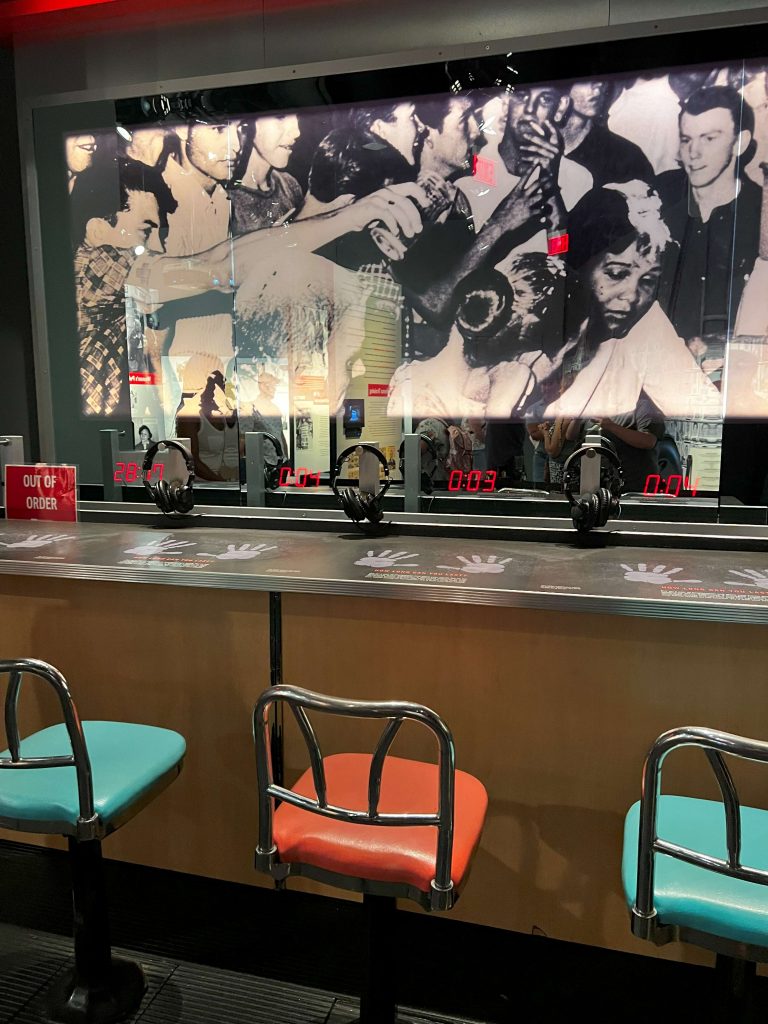
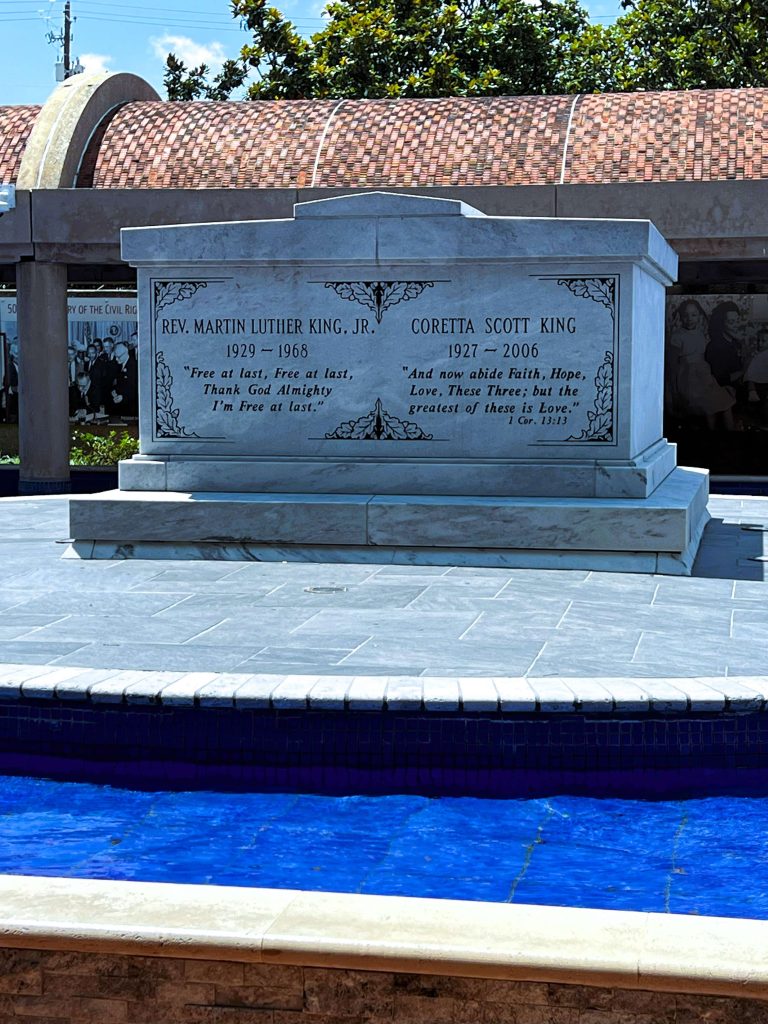
In Georgia, she sat at a lunch counter sit-in simulator at Atlanta’s Museum for Civil and Human Rights when researching the roots of rock and roll. And in Tennessee, she stood reverently outside the Lorraine Hotel after touring the Blues Hall of Fame and Sun Records (recording studio of such icons as BB King and Elvis Presley) in Memphis before taking the stage at Nashville’s Ryman Auditorium and making a pilgrimage to the Woolworth’s on 5th.
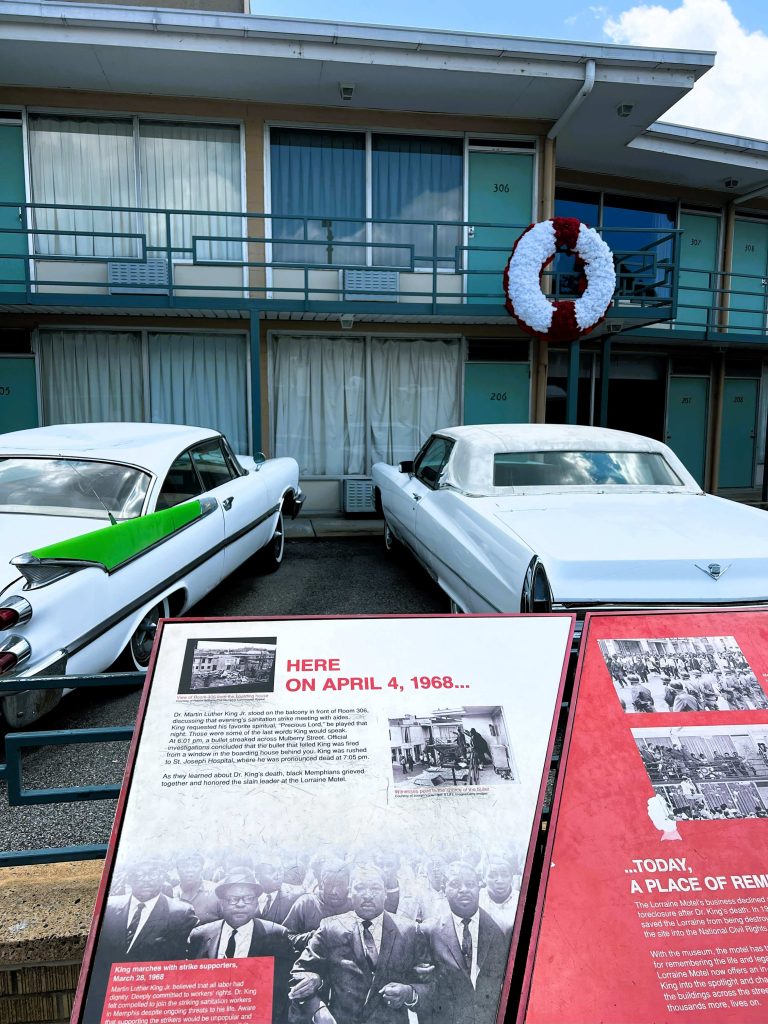
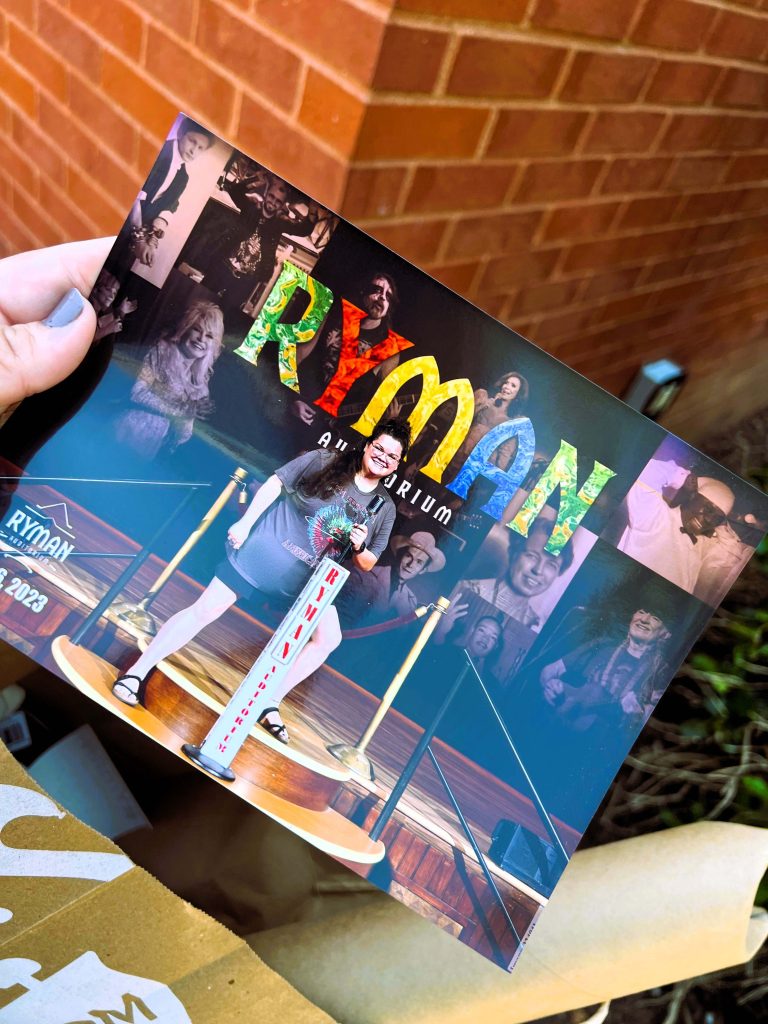

Ashley rounded out the odyssey with visits to The Museum at Bethel Woods and Max Yasgur’s Farm, the site of the 1969 Woodstock Music Festival, Cleveland’s Rock and Roll Hall of Fame and Museum; Detroit, the Home of Motown; and Chicago’s DuSable Black History Museum, Ida B. Wells House, Monument to the Great Northern Migration, and Chess Records.
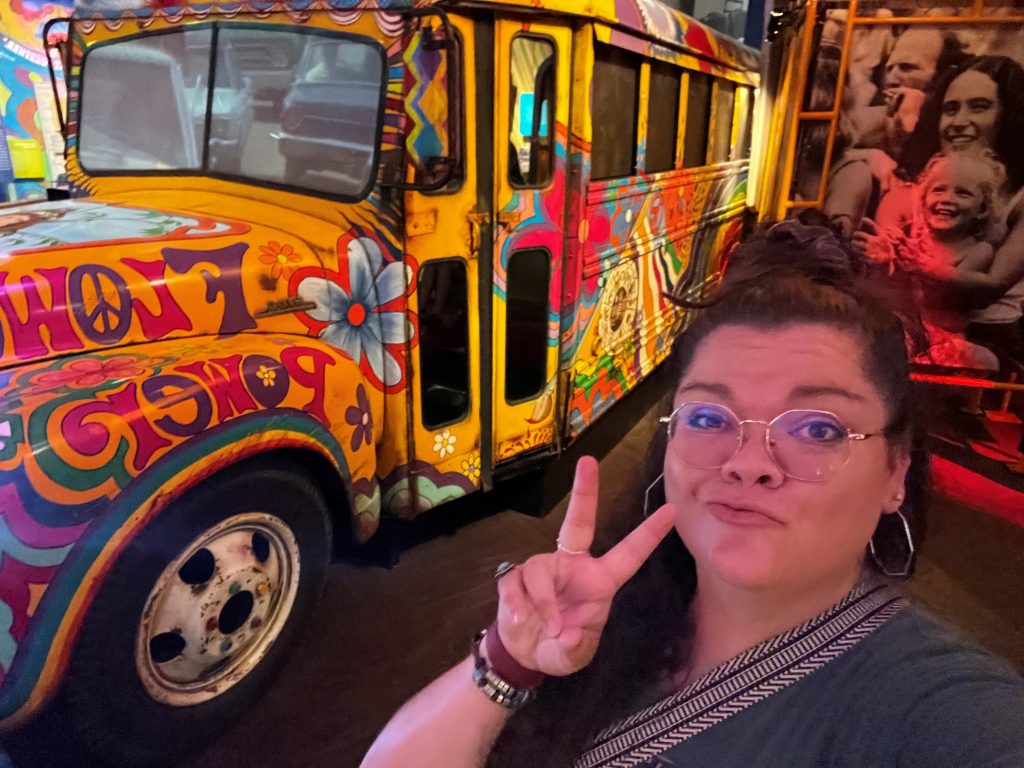
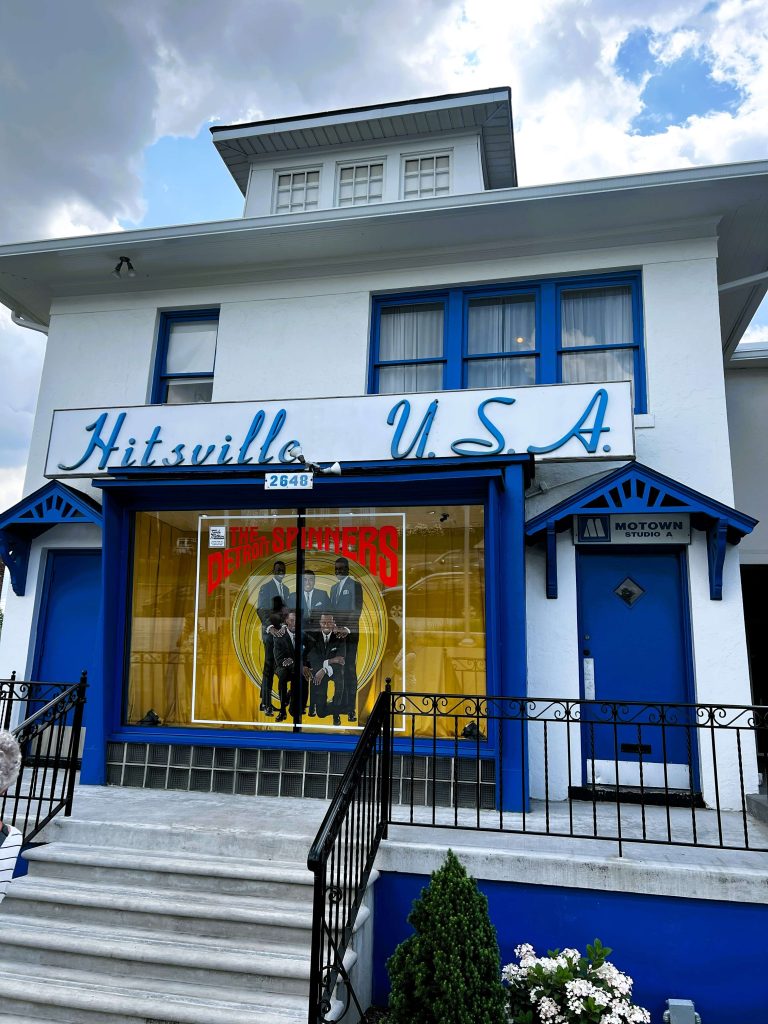
Artifacts and experiences gathered on her 10,000 mile/six-week journey now inform the majority of her Music History course, which focuses on US history from the mid-1800s through the 1990s and how music reflected and influenced current events of the day. So far this semester, students have been decoding spirituals. Ashley learned about Underground Railroad codes embedded in quilts and spirituals at Slave Haven in Memphis, where she sang “Swing Low Sweet Chariot” with the other visitors, and was led to a small compartment under the house where people seeking their freedom hid more than 150 years ago.
“I aim for my emotion and experience to be funneled through my teaching to inspire my students to move beyond being knowledgeable, and to work for change in how they treat others and inspire other people to do the same, to travel and move beyond our state that so few of them have left, to find interest in other cultures and histories, and to yearn for knowledge throughout their lives,” said Ashley. “I believe my example of being a life-long learner, an empathetic change-seeker, and a risk-taker through this fellowship encourages my students to do the same throughout their lives, as well.”
The inspiration behind Fund for Teachers fellowships are as diverse as our Fellows; however, only one (that we know of) stemmed from a subway attack. In November 2021, four Asian-American students were attacked because of their ethnicity by four Black teenagers. Alarmed by subsequent increasing racial tensions at Central High School, members of the school’s Asian Pacific Islander Union (APIU) collaborated with Black peers to brainstorm about ways to unite and support each other.
One result was the re-institution of an Asian American history course Ken taught 15 years ago, previously cancelled due to budget cuts.
“I feel that my strength as a teacher lies in my ability to work with students to create spaces where they can learn about issues that are important to them and develop solutions to problems they are currently facing,” said Ken. “My aspiration is to continue refining the course in a way that meets the needs and interests of my students. With this in mind, I designed a fellowship to better understand how the history of Asian Americans is interconnected with that of other BIPOC (Black, Indigenous, and People of Color) communities – specifically, how my students can reflect on how these interconnected histories have shaped Asian American culture.”
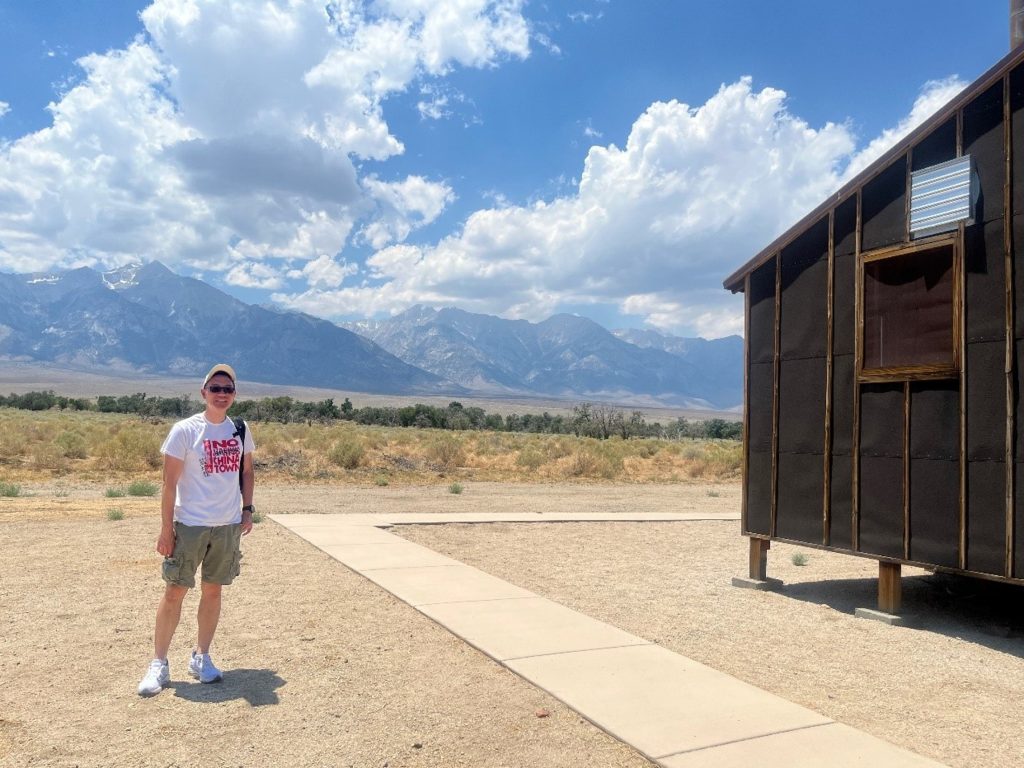
Ken used a $5,000 grant to cover costs associated with the NEH Summer Institute: Little Tokyo How History Shapes Community Across Generations organized by the Japanese American National Museum (JANM). He was particularly interested in the events leading up to, during and after the Japanese Incarceration in World War II – when Japanese and Black Americans worked together to combat discrimination.
“Thanks to my FFT grant, I was also able to spend time outside of the NEH Institute to fulfill the goals of my grant,” Ken explained. “Staff from the JANM helped me conduct research on how allies in the Black communities of LA supported Japanese Americans during and after the Japanese Incarceration. I met with an activist who took me on a tour of Little Tokyo and helped me understand the impact of gentrification on its Black and Asian residents. Finally, I was able to visit neighborhoods in LA, such as Crenshaw, where Black and Japanese Americans lived and challenged housing discrimination.”
In addition to experiencing multiple museums and, ultimately, the Manzanar War Relocation Camp, Ken prioritized making personal connections with individuals who themselves experienced this period of history, including:
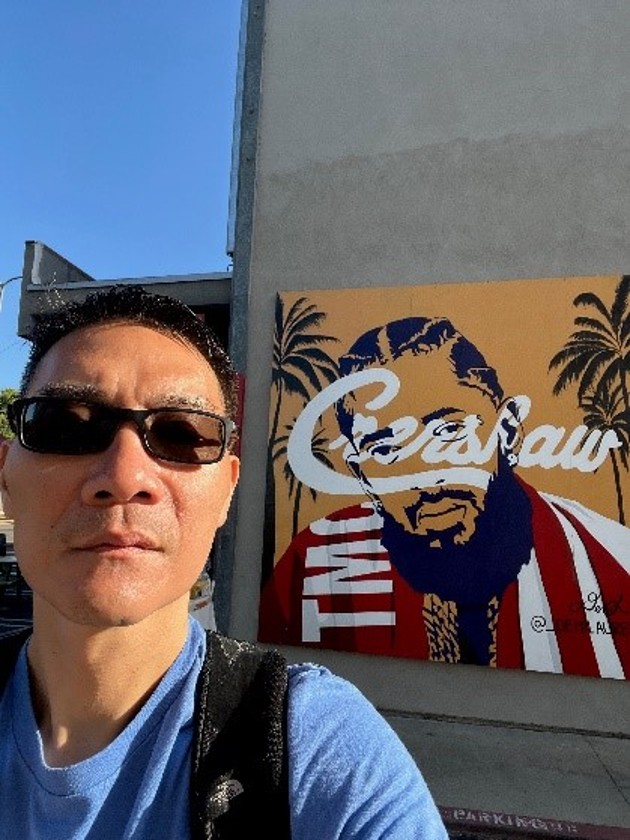
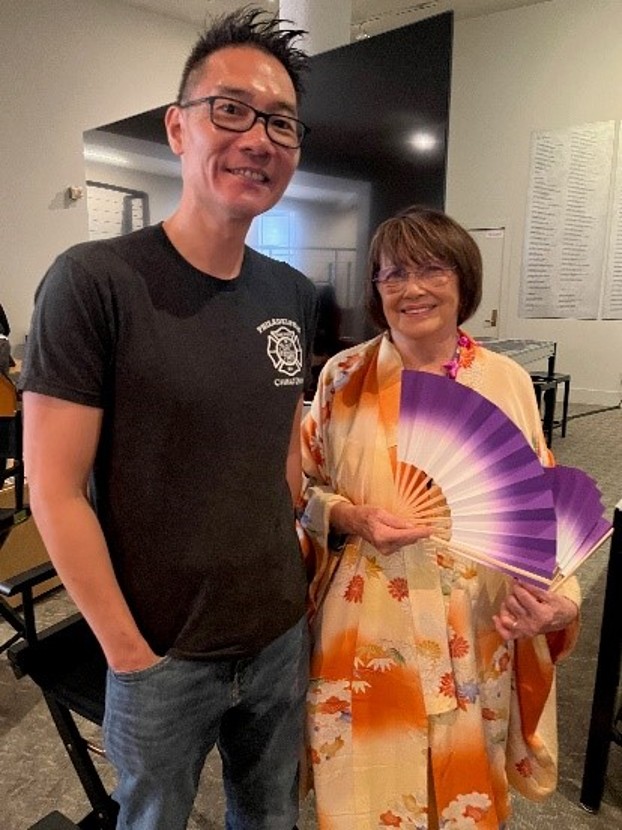
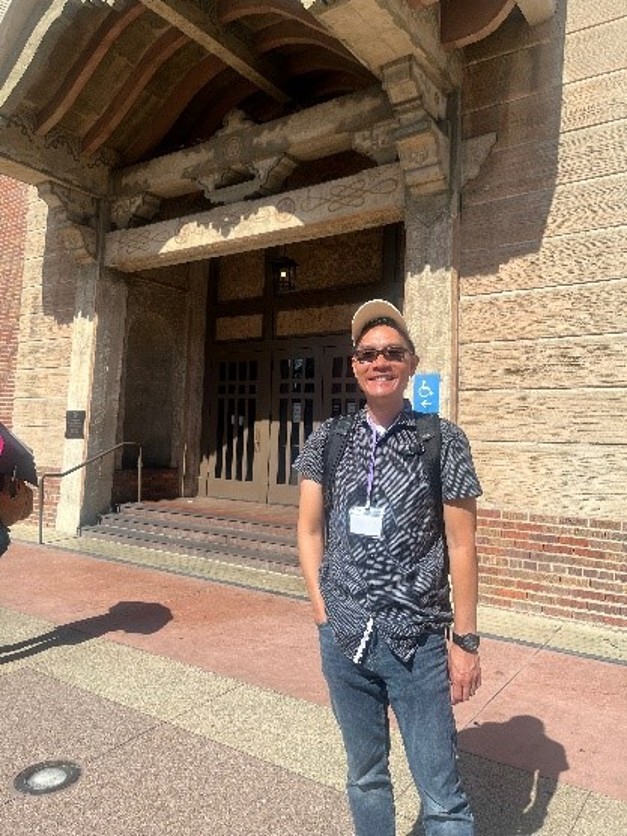
(Exploring Los Angeles’ Crenshaw District; meeting June Aochi Berk, on a tour of Little Tokyo guided by members of the Little Tokyo Historical Society)
Ken is working with the JANM to have students Zoom with a survivor of the Japanese Incarceration in the coming weeks. His fellowship will also inform their novel study of Buddha in the Attic, part of a curriculum Ken hopes to expand throughout the district through professional development workshops for teachers who wish to teach Asian American Studies using a cross-cultural lens.
“Many students at my school, including those who define themselves as Asian American, struggle to define what Asian American culture is, especially in light of stereotypes that define Asian Americans as being a foreign culture,” said Ken. “I define culture as being the shared understanding of a group of people and believe that this understanding is shaped by the relationships that people build across cultures. Through my unit, I want students to consider the extent that Asian American culture is not only part of American culture, but is likewise shaped by the shared struggles we have with other communities of color.”
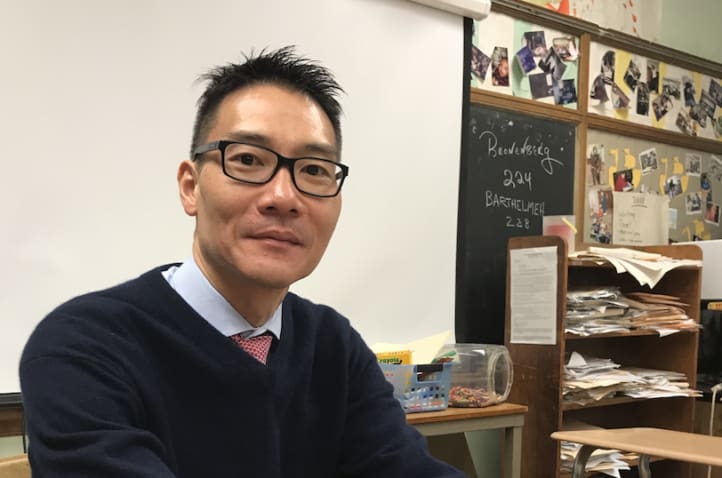
Ken Hung teaches AP Seminar/English 3 with a concentration in Asian American Studies, IB Global Politics and AP European History. In addition to serving as faculty sponsor for the Asian Pacific Islander Union, he is also a co-coordinator of the Bridge Leadership Program, a mentorship program for incoming 9th graders from underrepresented backgrounds. Ken is a three-time FFT Fellow and a 2024-2025 Philadelphia Affinity Group Network Facilitator for TeachPlus.
Three years ago, Ariana Sanders (Cincinnati) used a $5,000 Fund for Teachers grant to participate in the Witness Tree Institute’s immersive educator experience in Ghana, where she explored the impact of colonization, as well as how Africans protect their natural resources. Her goal was to inform the development of learning objectives and course modules for Ethnic Studies to be offered not just at her school, Wyoming High School, but to ALL of Ohio’s high school teachers.
“I cannot count the ways in which this fellowship was an influential time for me,” said Ariana. “It felt like an inspired experience literally from the second the plane landed — I felt more connected to my roots as a biracial person. The Witness Tree Program really allowed me to go into areas where it is NOT touristy, talk to many professors, participate in cultural activities (food, dancing, games, etc.) It is hard to put into words what that means or how much I see that impacting my soft skills — understanding others, appreciating differences…we all clearly need more of that!”
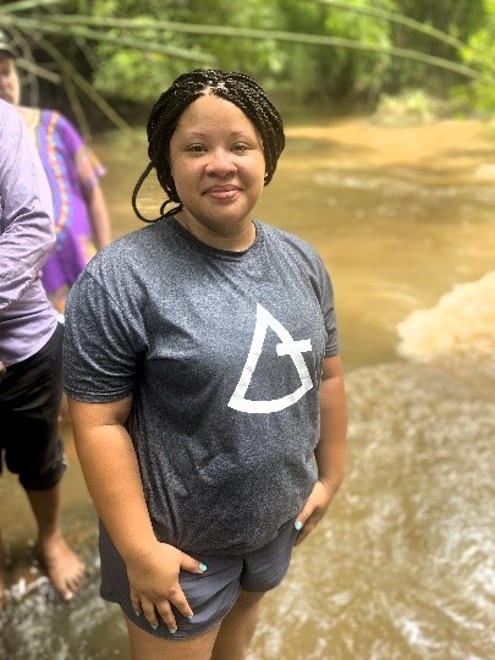
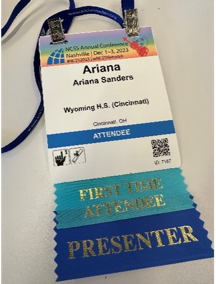
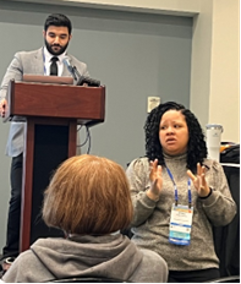
Caption: Standing in Slave River, where captured men, women and children slaves bathed for the last time before they went to the auction; Ariana’s conference nametag and presentation session.
That connection and cultural immersion informed learning standards and curriculum for a new official course offering in the Ohio Social Studies program called Religion, Gender, and Ethnic Studies, which Ariana presented at the National Council of Social Studies’ national conference.
Additionally, Ariana sits on the advisory board for Boston University’s Teaching Africa Teacher (TAT) Certificate Program, which supports pre-service and in-service K-12 teachers and higher education instructors interested in engaging with Africa in their classrooms. As part of this opportunity, Ariana crafted an additional curriculum titled W.E.B. DuBois & Ghana: As told through 3 primary sources – which you can access here.
“I’ve kept up with colleagues from my fellowship in Ghana, so those relationships, as well as peers through the TAT board, give me a space to advance higher education African studies and be in touch with people who are also working to ensure Africa is represented in more social studies classes. I feel like I am the biggest cheerleader for Fund for Teachers.”
W.E.B. DuBois said, “It is the trained, living human soul, cultivated and strengthened by long study and thought, that breathes the real breath of life into boys and girls and makes them human, whether they be black or white, Greek, Russian or American.” He would be proud of the impact Ariana is making, as are we.
Today the world remembers the bombings of Hiroshima and Nagasaki which took place 79 years ago and resulted in the formal surrender of Japan and the end of World War II. When Ariel Warshaw remembered this pivotal moment in history, she also realized that her viewpoint lacked global perspective, as well as the peace that was catalyzed post-mortem.
“The reality of living in the US is that my understanding of histories, perspectives, and cultures beyond a Eurocentric lens is not as authentic as I want it to be. I aspire to have a more multidimensional mastery of my content area by exploring non-Western history in a deep way,” wrote Ariel in her Fund for Teachers grant proposal. “Most importantly, I’m committed to turning my students’ knowledge into action. I want us all to consider the lessons in these survivors’ testimonies and use them to drive change in our communities. I prioritize this philosophy at this stage in my career.”
Her overarching goals of the fellowship were to:
Upon hearing that she was selected as a 2024 FFT Fellow, Ariel promptly created the Instagram feed @whereswarshaw and posted this: “I’m thrilled to share that I’ve been named a Fund for Teachers Fellow! This grant will allow me to explore the experiences of the hibakusha (survivors of the Hiroshima and Nagasaki bombings), and examine how culture has influenced reconstruction, reconciliation, and peace studies in both traditional and modern Japanese society. I’ll be visiting Tokyo, Hiroshima, Nagasaki, Kyoto, and Osaka in July! My goal is to develop a unit focusing on the atomic bombings, utilizing oral history, primary sources, and personal testimonies. Follow along on my adventure!”
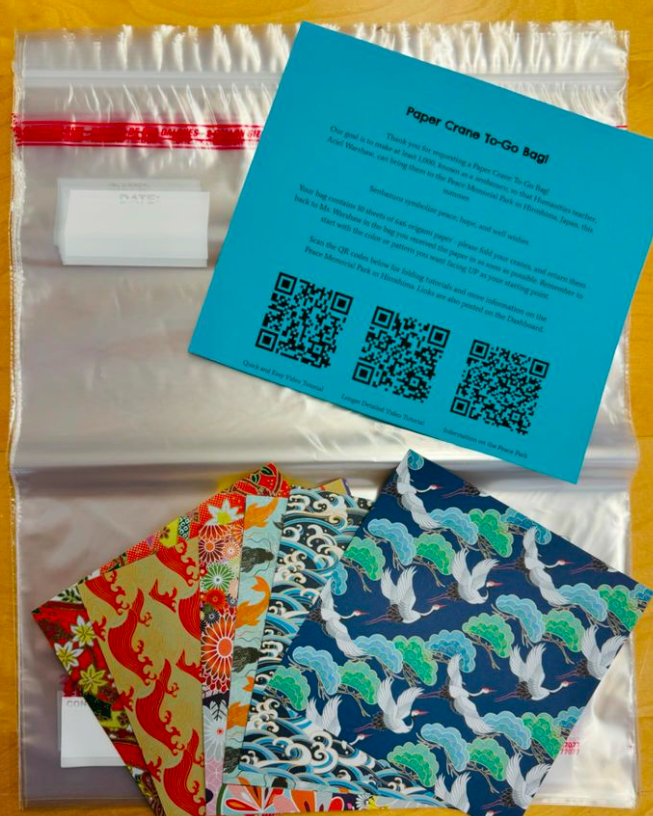
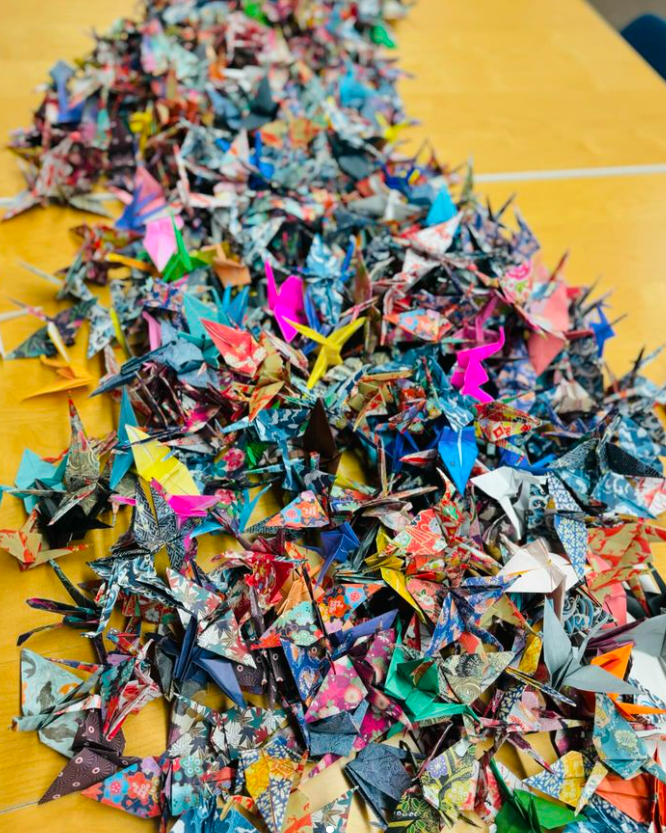
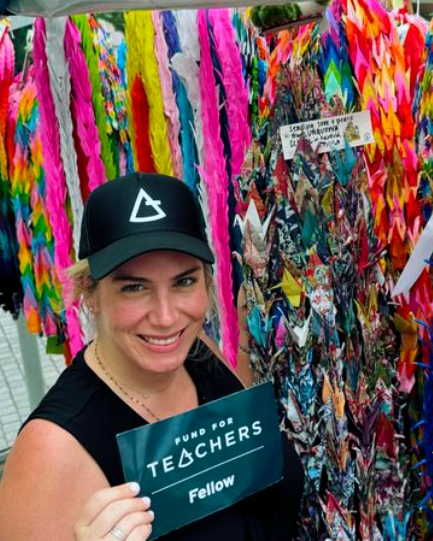
Ariel’s students and their families were also thrilled, and immediately got to work folding 1,000 paper cranes to create a “senbazuru” for her to hang at The Children’s Peace Monument in Hiroshima’s Peace Memorial Park while on her fellowship.
We encourage you to visit Ariel’s Instagram feed where she thoughtfully shared images and reflections from her 16-day fellowship. Below, we share her reflections specifically related to the bombing and the hibakusha with whom she met…
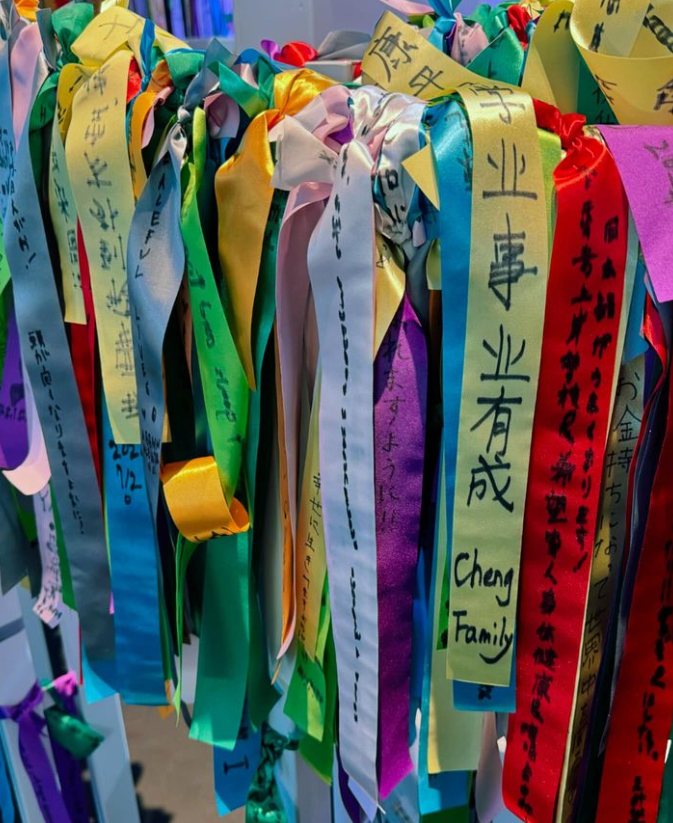
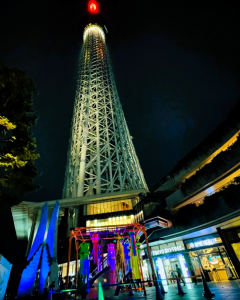
Day 1 in Tokyo! I landed at 2:30pm, wound my way through customs and immigration, and finally made it to my hotel. By the time I checked in, it was 4:30 – I grabbed a quick bite at the conbini on the corner (egg salad sandos totally live up to the hype!) and decided to give the metro system a spin! I found myself at Tokyo Skytree – the world’s tallest tower at 634 meters! It was a perfect way to get a bird’s eye view of this massive and marvelous city. At the top, there was a place to select a ribbon and write a wish for humanity – people then tied these ribbons on the viewing platform. It was a beautiful way to ground my thinking around this adventure – how does the desire for peace take hold in societies, and what lessons did the bombings of Hiroshima and Nagasaki in particular have on Japanese society’s pursuit of peace.

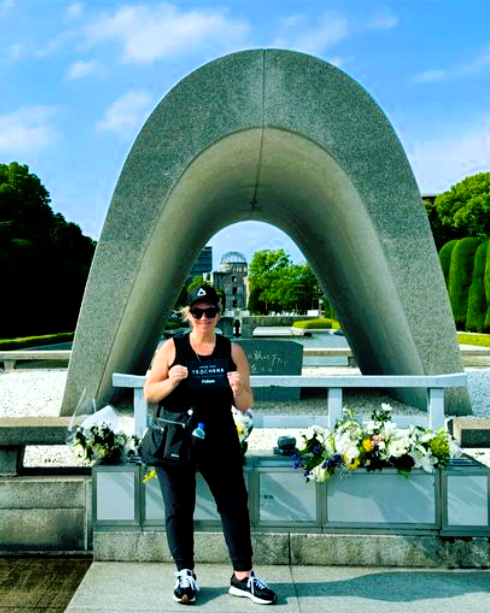
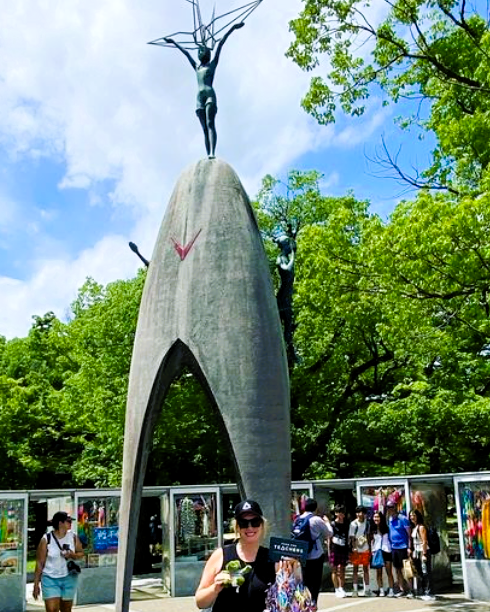
Hiroshima: Wow. What a day! I took an early morning Shinkansen (bullet train) from Tokyo to Hiroshima. The nearly 4-hour ride passes lots of small towns, which were beautiful to see, and I was able to see Mt. Fuji, too! As soon as I arrived in Hiroshima, I fell in love with it. Such a casual and caring atmosphere, stunning bridges, and quirky details. After a quick bite, I made my way to the Children’s Peace Memorial so that I could finally hang the incredible senbazuru – 1000 origami cranes – that our school community created. It was a really meaningful moment. I then explored the Peace Museum itself – the permanent exhibit is remarkable and heartbreaking. It contained a plethora of artifacts from victims and survivors – clothes, toys, journals, postcards, audio and video testimonies, and so on. There was also an entire section devoted to Sadako Sasaki, replete with cranes she herself had folded. After the museum, I met with Yoko Mimura-san, from the World Friendship Center, who guided me through the Peace Memorial Park – she taught me about a variety of structures found in the park, the significance of each, the history of the area, why Hiroshima was chosen to be bombed, and how the city has reconciled itself with their tragic past and inspired future.
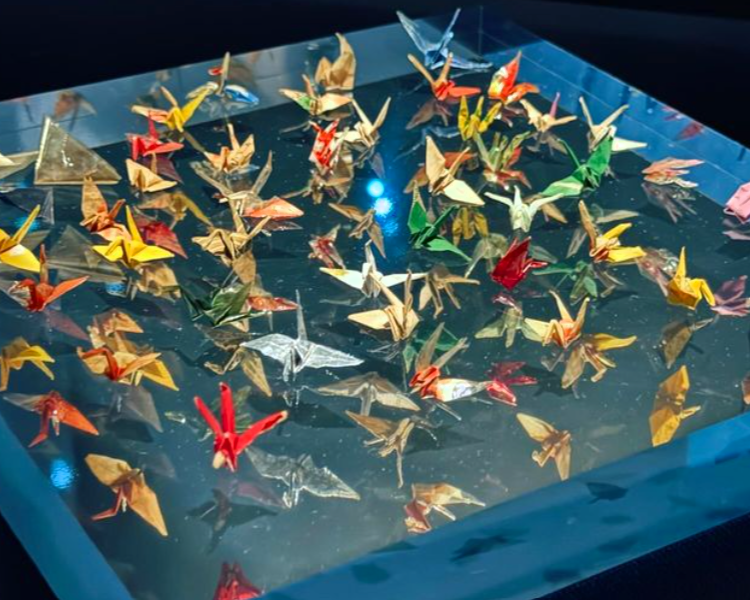
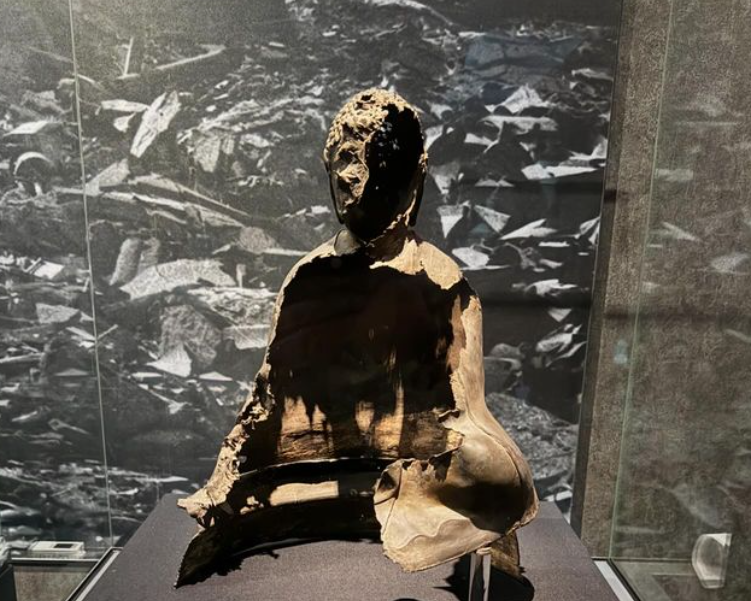
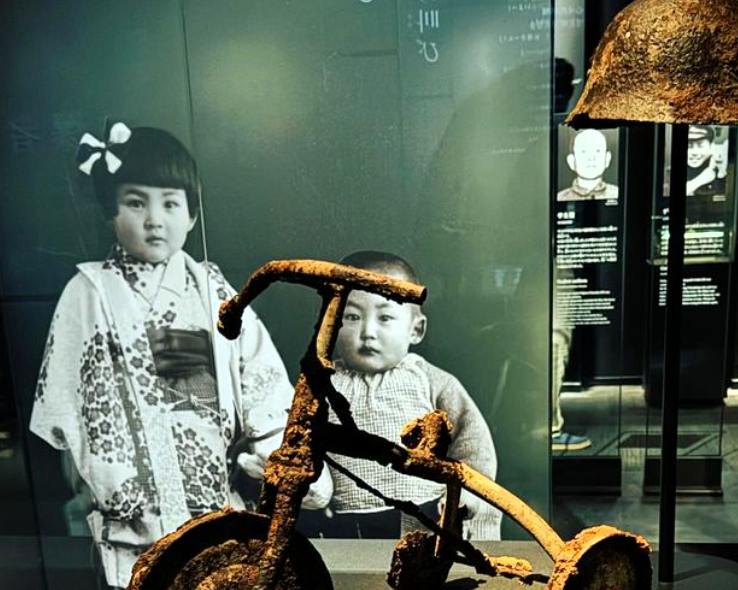
Hiroshima: Today was remarkable. In the morning, I went to the World Friendship Center @wfchiroshima to meet with Mr. Tamiyuki Okahara-san – or Mr. Tami – a hibakusha (atomic bomb survivor). He shared his story with me, and also relayed his father’s incredible story of survival. I saw family photographs, newspaper articles, and maps that helped illustrate what Mr. Tami and his family endured. Many in his family, himself included, have suffered from unknown illnesses and cancer. Despite these hardships, he was such a positive and inspiring man…
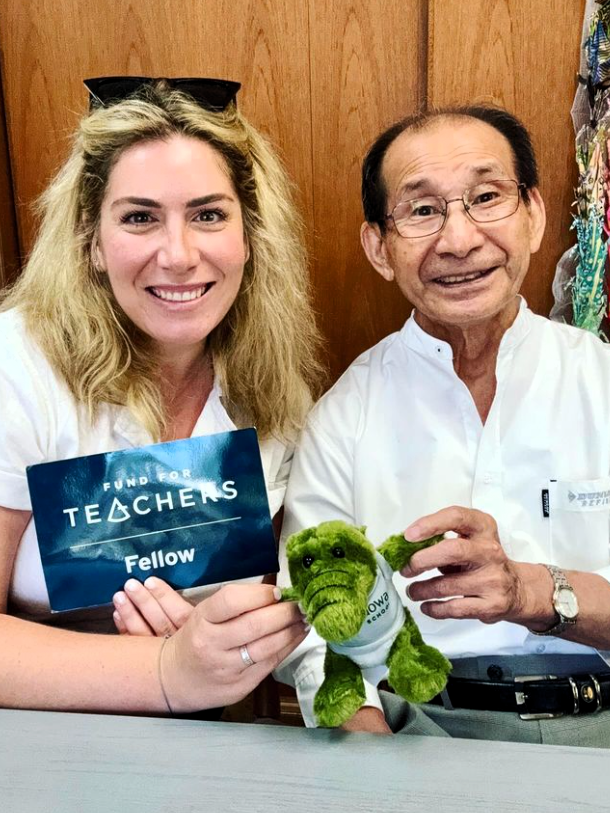
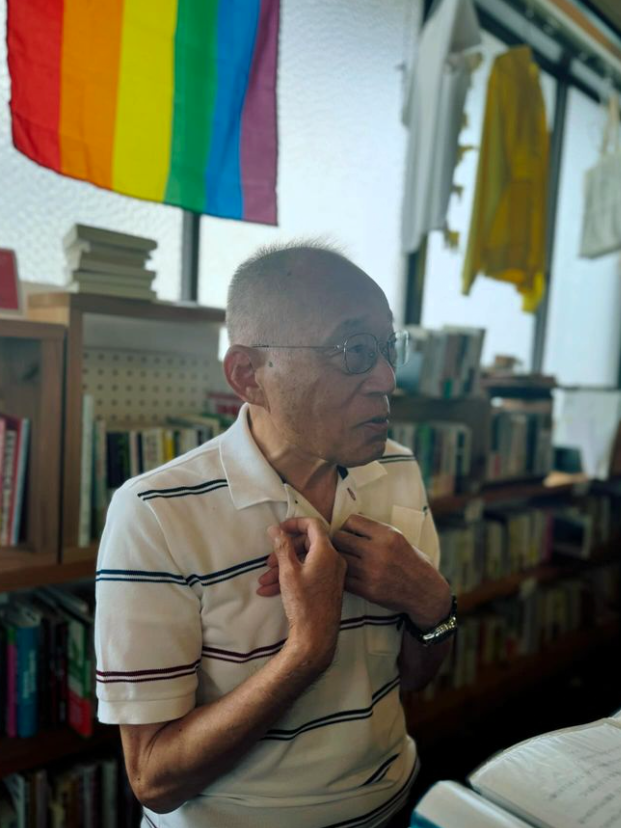
My next appointment was at Hachidori-sha Social Book Café. The owner, Erika Akibo, wanted a space to serve as a meeting place for locals and visitors alike to talk about global issues and social justice. On days that end in “6”, the café hosts hibakusha meetings (the bomb was dropped on August 6, so on the 6/16/26th of each month, these meetings occur). Mayu Seto, an employee but also a peace activist who works with Peace Culture Village and Kakuwaka Hiroshima, arranged for me to meet with Mr. Okamoto Tadashi-san, another hibakusha, with a small group of other interested visitors. A young woman named Mitsuki served as our translator. Mr. Tadashi was only 1.5 years old when the bomb was dropped on Hiroshima; he has scars on his arm, head, and back from that terrible day. He shared his testimony with us, explaining that after the bomb fell, everything went dark. He started to cry, and his pregnant mother was able to find him and get out of the house and away from the hypocenter. After he spoke, our group had the chance to ask questions – it was nice to learn together as a group, and people asked questions that I hadn’t considered which led to even deeper conversation and reflection.
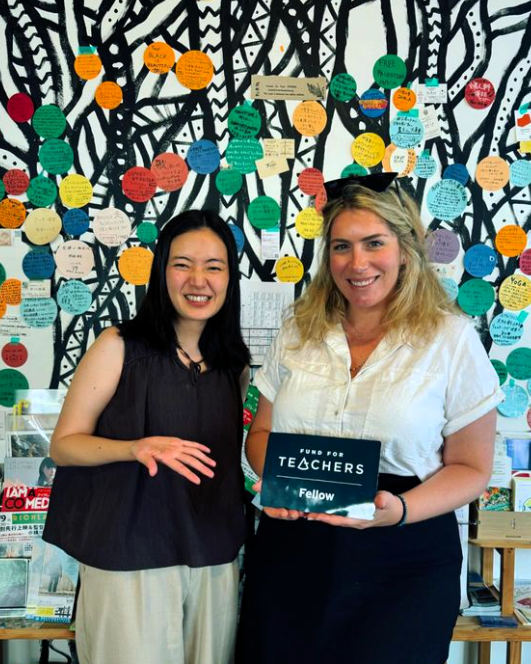
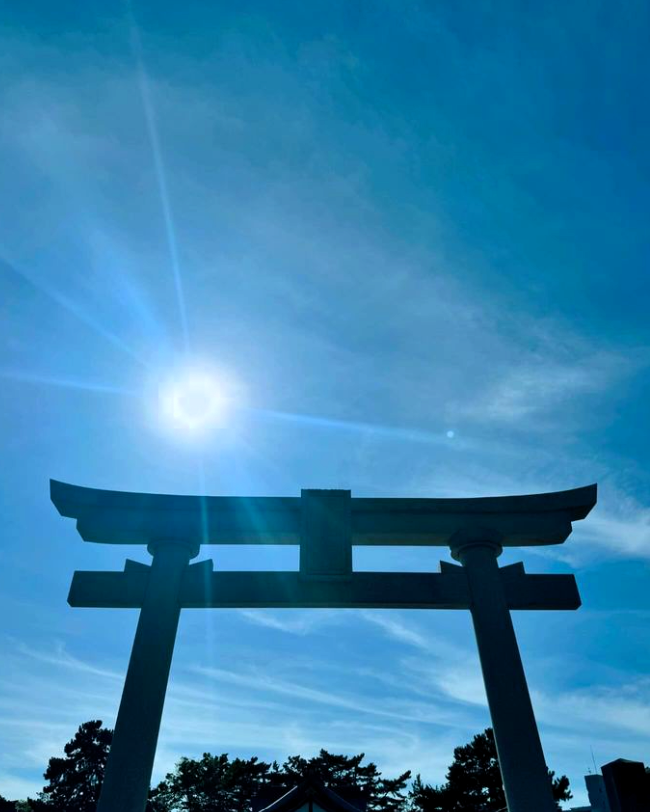
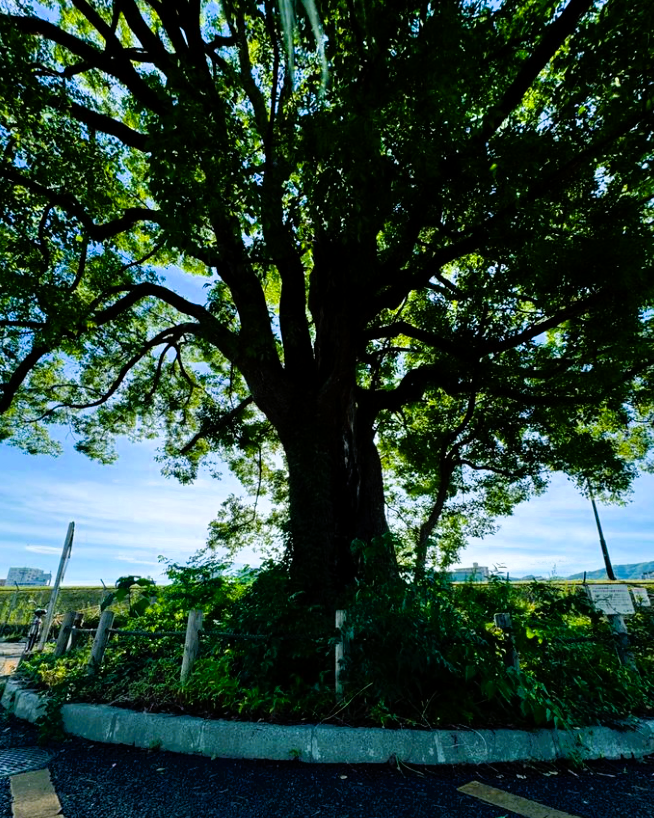
Following this conversation, I met with Ms. Miho Tanaka, a co-founder and representative from Kakuwaka Hiroshima – this group lobbies parliamentarians to push the Japanese government to sign the Treaty for the Prohibition of Nuclear Weapons. In addition, they host events focused on world peace and global activism. I was so grateful for her time – I learned a lot about the ways the peace community is pressing for change. After my meeting with Miho, I walked over to see Hiroshima Castle and Gokoku Shrine, and then visited the surviving Great Torii of Hiroshima – a torii gate that survived the bombing. Finally, I met with Ms. Miho Ikeda-san, also affiliated with World Friendship Center. She took me on a walking tour to visit A-bomb survivor trees. Miho explained that only 160 trees survived within a 2km radius of the hypocenter – and 1 was mistakenly cut down last year. She showed me how, on 80% of these surviving trees, their trunk leans towards the hypocenter. This is because that side of the tree grows more slowly than the other, causing a slight bend in the trunk. It was a unique way to learn about the environmental impact of this atomic bomb in Hiroshima, and nice to end the day appreciating nature!
Hiroshima + Nagasaki: I started the morning at the Radiation Effects Research Foundation (RERF) in Hiroshima, where I met with Jeffrey Hart, from the Public Relations and Publications Office, and an intern from Smith College, Claire, who had started just this morning! RERF is a joint US-Japanese research organization that studies the health effects of A-bomb radiation. At their facility, they meet with hibakusha (survivors) who are part of one of their studies every other year for health exams, house thousands upon thousands of bio samples in state of the art freezers (I got to see their newest freezer, which is completely robotic and can store hundreds of thousands of bio samples at -80°C), and research the impact that A-bomb exposure has had on survivors and their children. It was a truly eye-opening experience, and I was so grateful for Jeff’s time and openness!
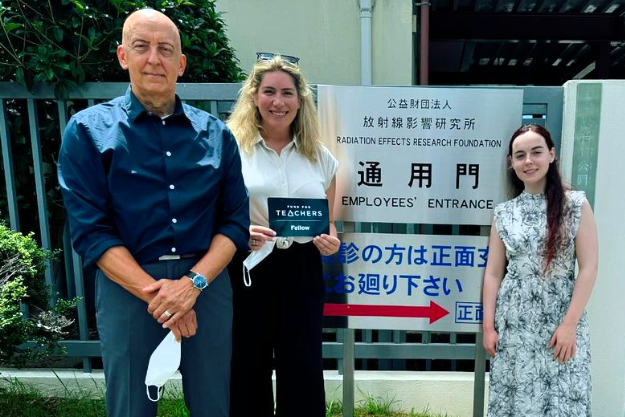

From there, I headed to Hiroshima Station to catch the first of 3 trains to Nagasaki. 3 hours later, I had made it! I quickly checked into my hotel, and then went to the Nagasaki Atomic Bomb Museum. While it was much smaller than the Peace Museum in Hiroshima, I really appreciated the artifacts they displayed and the straight-forward and brutally honest exhibits they presented to visitors. After the museum, I made my way to the Memorial Hall, and then from there, the Hypocenter and Peace Park. I even saw air raid shelters from WWII that were dug into the foot of a hill that now surrounds the park. All of these places were really moving and contemplative – spending time outside as I ended my day was a great way to reflect on what I’ve learned in the last week, and consider ways to bring it all back to the Humanities South classroom.
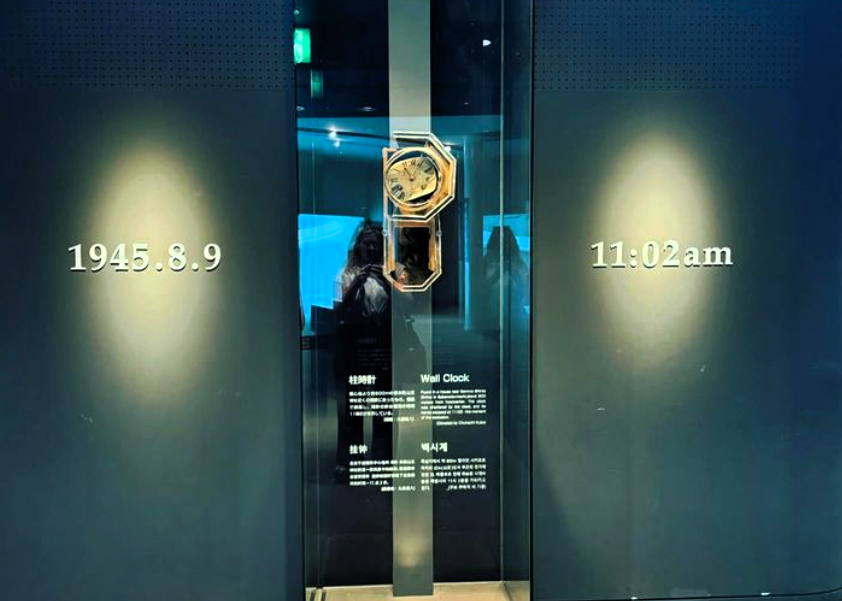
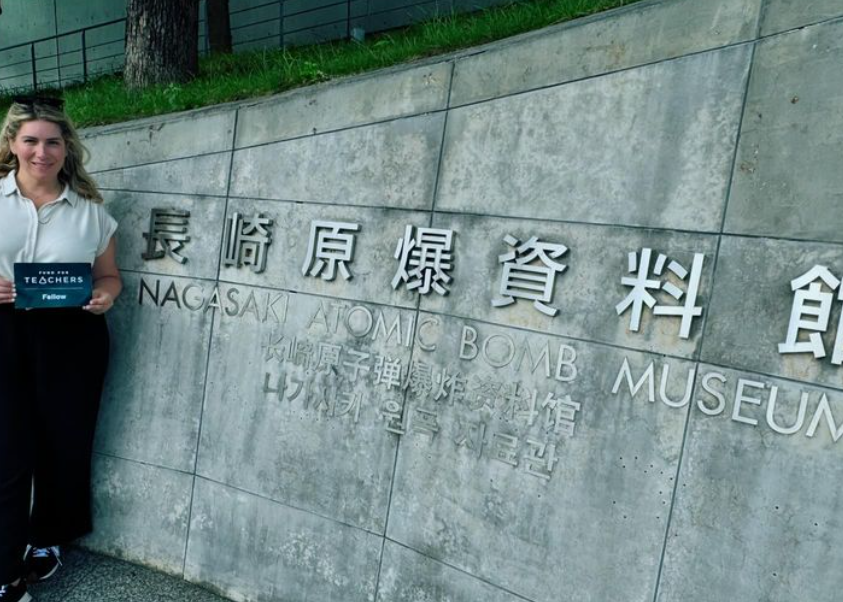
Osaka + Kyoto: This morning I jumped on a train to Osaka! After an hour ride, I got off at Kyobashi Station and made my way to the Osaka International Peace Center. This museum, also known as Peace Osaka, focuses on the destruction of the city during World War II, but also the tragedy of war more generally and the importance of peace. According to some cursory research, Japan has about 50 museums dedicated to peace – the United States has… 1. How can this be? What does it say about our culture? Japanese culture? What lessons can we learn?
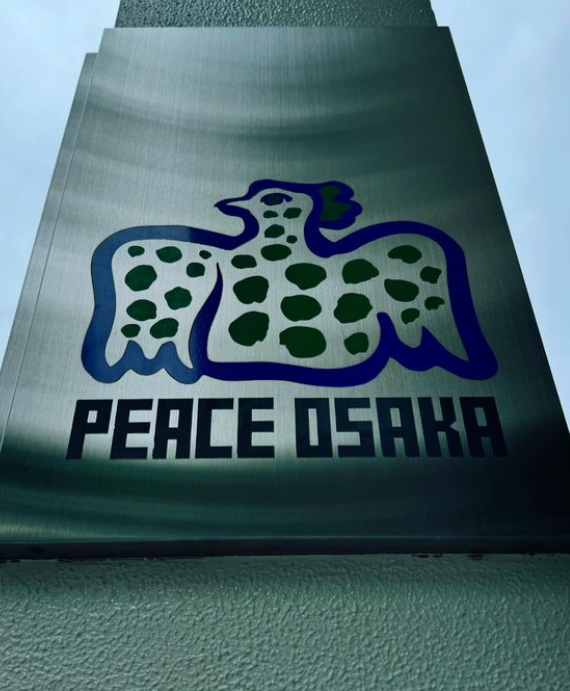
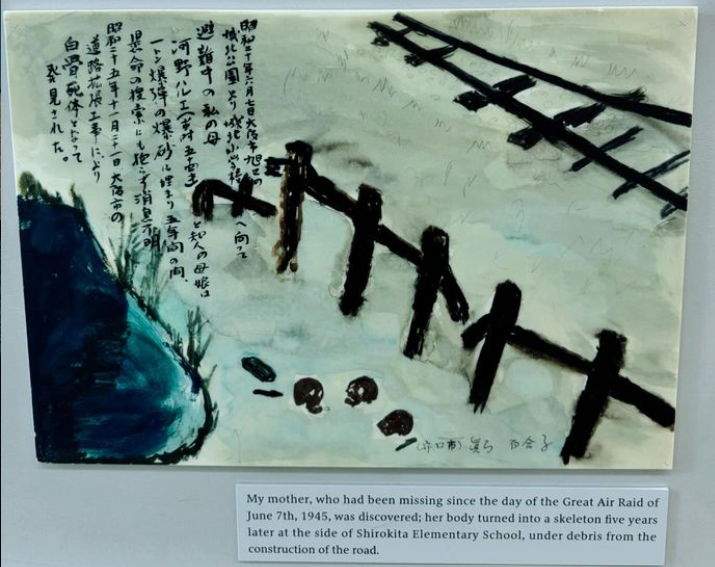
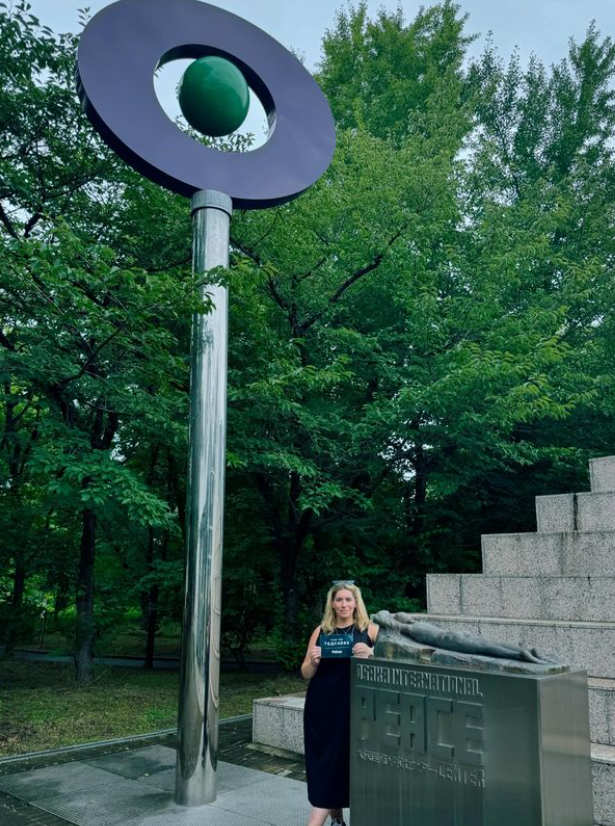
Now that I’m back home, I wanted to take a moment to express how grateful I am to Fund for Teachers for believing in my proposal, trusting me to know what I needed as an educator, and allowing me to grow in immeasurable ways. What an epic experience and empowering process with an amazing organization! Along this journey, I have met so many wonderful survivors, peace educators, disarmament activists, radiation researchers, historians, and artisans.
Thank you to the entire Unquowa School community for embracing my senbazuru project, cheering me on each day of this trip, and awarding me the Birdsall Grant to further deepen this project. I can’t wait to share what I’ve learned with you all!
Japan was pure magic: modern in so many ways, deeply rooted in ancient customs and beliefs, patient, honest, and gracious in the telling of its history, and resilient beyond words. I will hold this sacred time in my heart and mind for a lifetime. またね – definitely not goodbye but see you later!
Halloween can be a scary time for teachers, due students’ sugar highs, costumes gone wrong, and the “ghosting” of students” the day after. For Jinafer Brown’s French students, the learning takes on a fatal feel, as well.
Jinafer used a Fund for Teachers grant to explore the mysterious megalithic stone structures in Western Europe, gather evidence from French forensic scientists and archeologists on the origins of the civilizations that built these structures and create an inquiry-based unit to improve students’ science literacy skills.
This fellowship focused on death is rooted in data: 79% of students at Jenks High School scored below proficient at in science. Additionally, an Academic State Standards for World Languages that Jinafer struggles to meet is “expanding students’ knowledge of other disciplines while using the language to develop critical thinking.” Researching Neolithic stones in Western Europe and the French forensic evidence of their origins offered the perfect mix of science and language (and also speaks to the free reign our grant recipients have when crafting their unique fellowships).
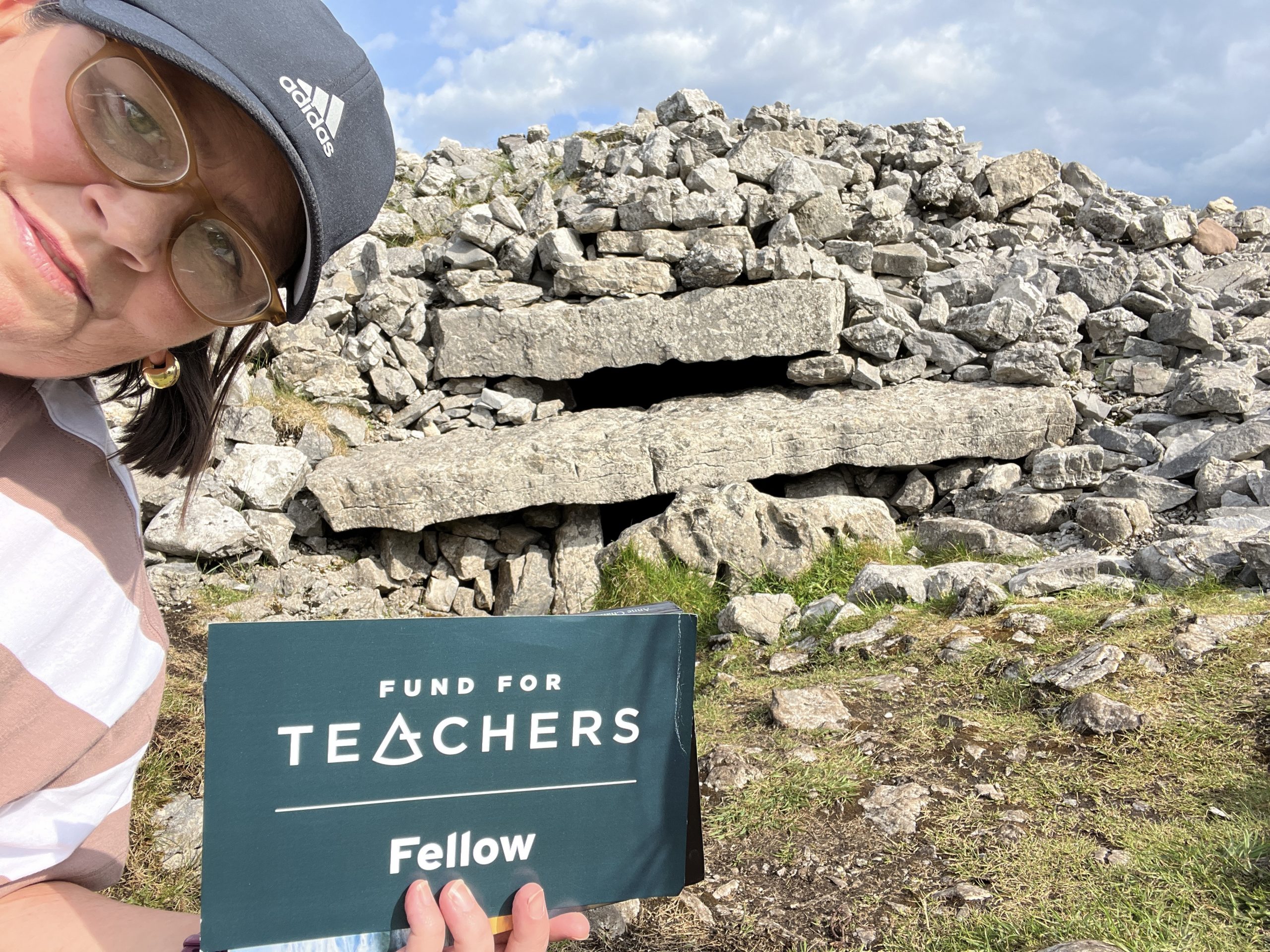
At Carrowkeel Mounds near Sligo, Ireland, I was able to explore freely without any restrictions other than my own fear. Believe it or not, I did muster the courage to skinny into the tomb behind me. It was for science!
Last summer on her Fund for Teachers fellowship, Jinafer documented:
Her research included filming the sites for VR headsets, touring museums — such as the Archeology Museum of Dublin, where remains of “bog people” from AD 20 are on display — and interviewing docents. Jenifer participated in a workshop about the first villages of France at Paris’ Musée d’Archéologie Nationale in conjunction with annual European Archaeology Days and joined summer solstice celebrations at stone circles in Scotland.
Throughout her learning, one question haunted her: “Should I be here?”
“I found that I had an internal debate as to whether or not funeral sites should be excavated. Should the remains of these kings and respected leaders be disturbed and viewed by thousands of visitors each day or should they remain closed out of respect for their cultures and their beliefs?” said Jinafer. “My professional mindset is that one’s intention makes all the difference. If one is studying these remains in order to make connections and remember the culture of that civilization, this is honorable.”
Jinafer created this fantastic website for students to discover the “Mysteries of the Megaliths.” Here they will view videos and interviews in the French language.
“I gathered PDFs and hard-copy books that explain the Neolithic civilizations in French. I collected articles and 360-degree photos that allow students to examine artifacts extracted from tombs in Ireland, Scotland, and France. Using Virtual Reality headsets [which Jinafer secured with a second grant], these materials will come to life.”
Using a THIRD grant, Jinafer purchased friction kits and students will follow the science lab friction experiment procedures in French.
“In small groups, students will propose prototypes of sleds and other means to Move a Megalith, she said. “Community partners (retired engineers and business owners) will work with students to build their prototypes. Last, in a school-wide event, students will carry out their experiments to see if they can move a megalith using only materials available in the Neolithic era.”
Take advantage of the website, that includes Jinafer’s FFT grant proposal, here.
For hundreds of teachers, today changes everything. Because today, Fund for Teachers’ 2024 grant application opens. Empowered by experiential learning fueled by $5,000 (for individuals) or $10,000 (for teams of two or more), our grant recipients are inspired to rethink their practice and reignite their passion for teaching, which consequently impacts their classrooms, school communities and careers for years to come.
PreK-12 teachers from across the country are invited to propose a summer fellowship that is:
Our application deadline is January 18, 2024, and members of the 2024 FFT Fellow cohort will be notified on April 4, 2024.
Are You Eligible? 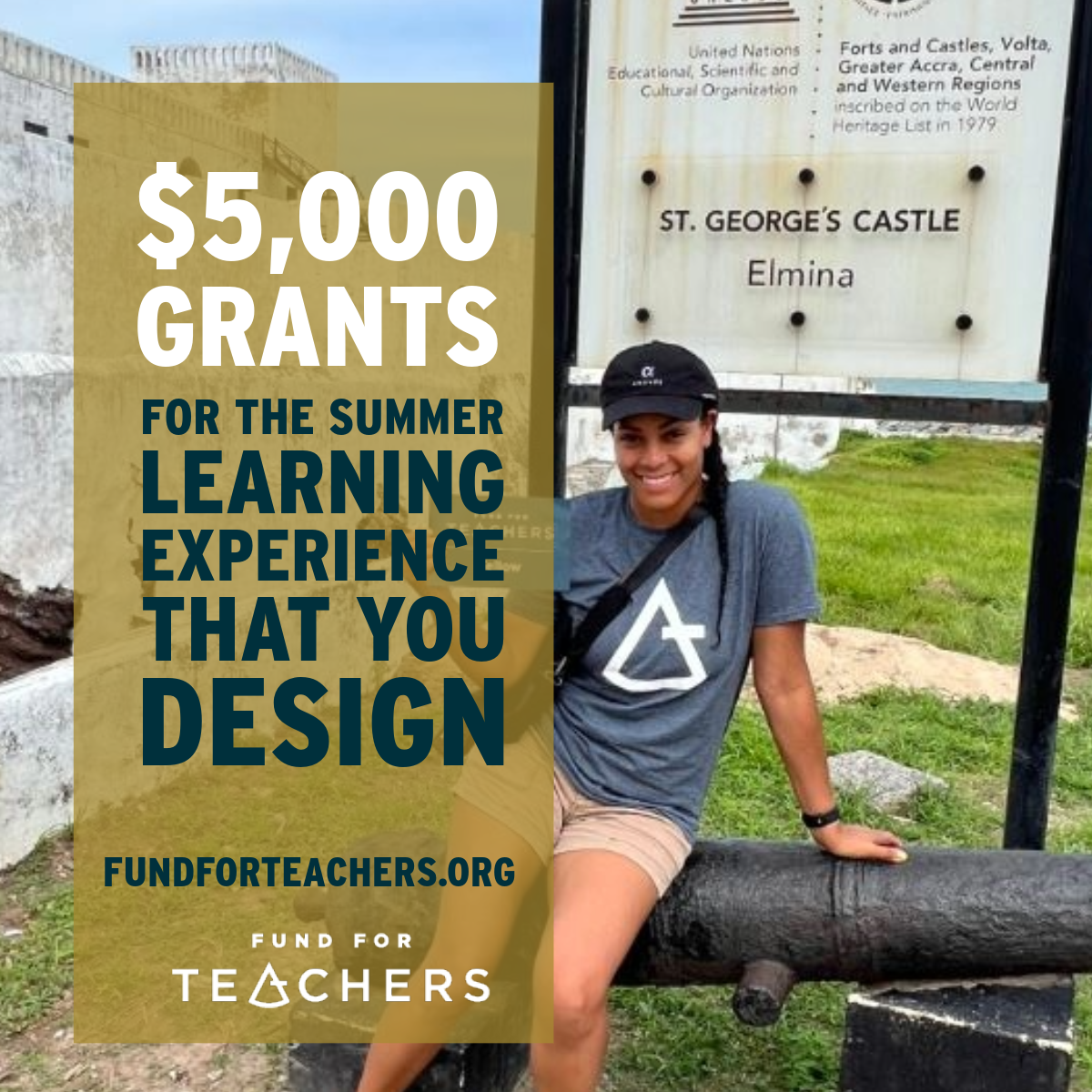
YES, if you:
What’s Your Re?
This year, we’re asking potential applicants to consider “What’s your Re-?” In other words, what could a Fund for Teachers grant help you accomplish?
During the next few months, Fund for Teachers will offer webinars and workshops designed to facilitate fellowship proposals that have the best chance of being awarded. (Watch our website for updates and registration links).
We also encourage applicants to take advantage of our Online Learning Center, which has links to the scoring criteria, grant writing tips, and a timeline for managing the process.
“Fund for Teachers is the country’s largest investor in teachers’ professional learning, with approximately 10,000 educators awarded $32,000,000 in grants for self-designed fellowships since 2001,” said Karen Eckhoff, executive director. “Now it’s time to add to our cohort of teacher leaders committed to their profession and their students’ learning.”
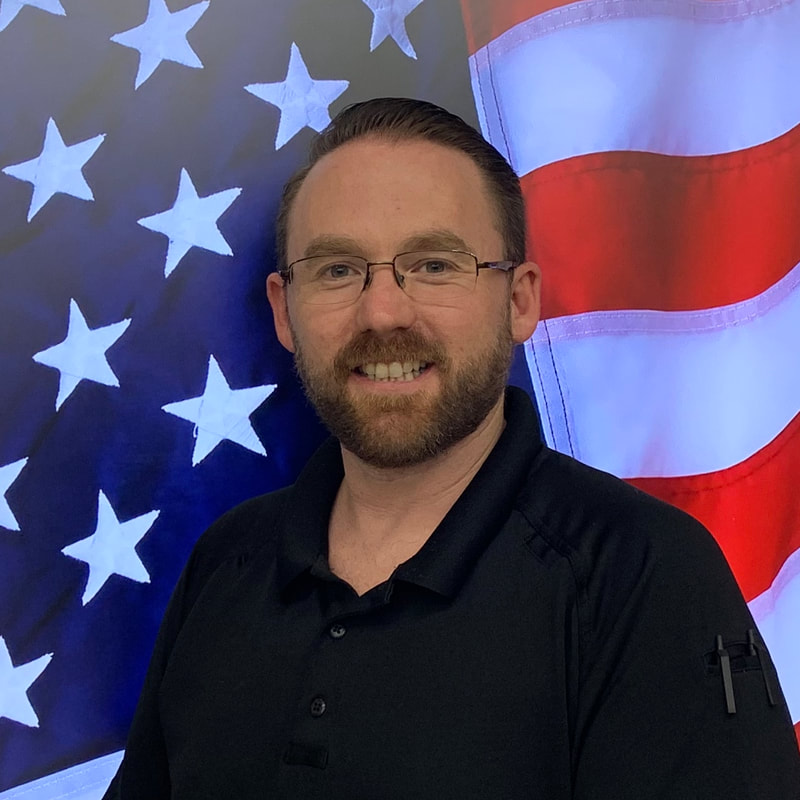 In celebration of Teacher Appreciation Week, we want to share our own appreciation for this thank you note from 2023 FFT Fellow David Cruickshank.
In celebration of Teacher Appreciation Week, we want to share our own appreciation for this thank you note from 2023 FFT Fellow David Cruickshank.
With his grant, David plans to research the Japanese culture that has no widespread access to firearms and has built a $2.6 billion flood protection system described as a modern marvel. Then, he’ll build and teach a criminal justice and disaster management trade curriculum for the State of Connecticut Technical High School System’s Criminal Justice and Protective Services program.
Upon returning from his fellowship, David proposed a unique implementation plan.
“I have a very exciting idea that I hope to develop and implement in our pilot program’s Emergency Operations Center, the emergency management curriculum, and push out to other programs — running a simulated disaster in the US with the emergency management procedures of Japan rather than those of FEMA.
I would like to develop a lesson that follows what my students have learned about US disaster management with the way Japan handles disaster management and then compare the two styles with a fictitious disaster and compare and contrast them. I envision the lesson lasting close to two weeks with first learning about the disaster management system and response structure in place in Japan, then simulating a response, and then using it as a springboard to compare and contrast the two systems before the ultimate assignment of challenging the students to design their own “perfect” disaster response framework. I think that encouraging students to not only learn about other cultures but then use that learning to see there are other ways of doing what they thought there was no other way to do, and then create something even different from that, will be mind-bending for them.”
The service-learning aspect of this fellowship, as well as its potential to create a state- and nation-wide emergency response system powered by students, is mind-bending for us, as well! We look forward to seeing the impact made by this FFT Fellow and his students.
On the final day of their fellowship, Alice Laramore and Kat Atkins-Pattenson shared with us their reflection on a four-week, 9,000 mile road trip along the United States/Mexico border exploring language arts, visual arts, immigration and identity. Thank you, Team Paredes Que Hablan (or Walls That Speak) for sharing your experiences and hope for future students.
Our students cross borders every day. They switch from home language to school language and back again.Their warm presence, giggles, and questions invite new families inside our school buildings. And, everywhere they go, our students carry the imprint of their family members who came to Boston for refuge, for freedom, for opportunity. Every time these young people change spaces, they reconcile their identities and pasts with their presents and futures.
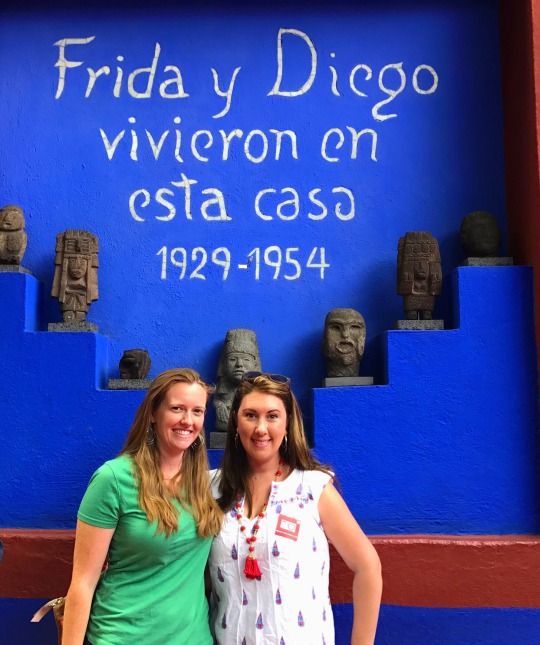 We know that for students to truly succeed academically, they must see mirrors of themselves in our curricula – art, media, and text – and validation of their identities in our classroom spaces. While we can empathize with our students, as white female teachers, we do not truly understand the depth of our students’ experiences. To effectively understand our students’ experiences, we need to cross borders ourselves and experience the displacement our students have experienced traversing these borders.
We know that for students to truly succeed academically, they must see mirrors of themselves in our curricula – art, media, and text – and validation of their identities in our classroom spaces. While we can empathize with our students, as white female teachers, we do not truly understand the depth of our students’ experiences. To effectively understand our students’ experiences, we need to cross borders ourselves and experience the displacement our students have experienced traversing these borders.
Today, the last day of our trip, we are energized by the Borders and Identity Unit that we have built and will use to launch the year with our students. We are flooded with all that we’ve seen in our seven cities. We are entrenched in the creative part of teaching, the part that involves being an interesting, engaged individual to better support the interesting, engaged individuals in our classrooms. The part that means we learn something new in order to teach something new. The experience of being a learner better prepares a teacher to teach, and this summer was an opportunity for us to authentically learn about murals on different borders, to confront not knowing and to investigate, to use art as a lens into community.
Watch in this video the artistic expression Kat and Alice captured in three countries and seven cities to help students answer the question: “How do we show other people the depth of our past and the strength of our future?”
This month, we immersed ourselves in adult project-based learning. We’ve tried lots of new things, from food to cloud-mountain hiking to driving to places we’d never been (while blogging) to talking about art from sunrise to sunset. And we’ve done the whole thing together. Often, in our classrooms, we create groups that we believe will benefit from the individuality of each member. We build in scaffolds meant to allow the group to discover each individual’s strengths and to make empathy a non-negotiable. Though we embarked with empathy and respect already in place, our twenty-six days together have illuminated the strengths and areas of growth (thanks, BPS, for the language) of our partnership. We both value efficiency, and, in the face of less-than-such (e.g., when the internet goes as turtle-pace, when people get motion sick, when you walk up the wrong side of the mountain, etc.), we have learned much about each other. That knowledge has made us better collaborators and better friends.
In San Francisco, where we started our trip, we were oriented to the idea of looking. This was not just because there was so much to look at in The Mission, but also because we did our first day with a guide, who was able to re-frame what we had seen and interpreted in the context of history and community. Carla made us cognizant of how much we needed other people’s knowledge and understanding to build our own. The Pacoima (L.A.) murals added a layer of “looking around corners” to that concept. On the hottest day of our trip, we spent the majority of it seeking out art on the walls of automotive dealerships and in the parking lots of community centers. It wasn’t always going to be all in one alley. In San Diego, a park once occupied by people and now occupied by art, had us looking for four hours and not seeing enough. We returned home those nights googling Aztec symbols and stories, trying to learn enough to know something.
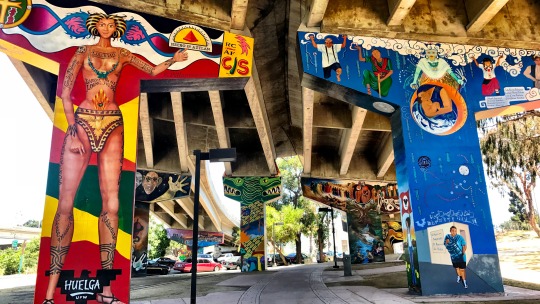
Tucson and Dr. Acosta gave us yet another frame through which to experience our learning. Freedom of education does not mean freedom to learn about the American Revolution and the Civil War through a lens of whiteness. Precious Knowledge, to our generation of “urban baby teachers,” is a reflection of our intentions. Though we (the generation of “urban baby teachers”) are in no way united in our vision or our understanding of social justice, the power of conviction in ideas, history, and lifting stories and voices drove us into the work of education. We wonder if Dr. Acosta knows how many teachers who are only five or six years in are tracking his legal battle and celebrating his victories, most recently the repeal of Arizona’s ban on ethic studies which a district court deemed racist and targeting of Mexican Americans.
In Santa Fe, we absorbed the International Folk Art Market, how artists envision and reimagine, how tradition can morph modern and can accommodate the present day without reneging its roots. This mirrors the murals we’ve seen and the art of Frida Kahlo, taking symbols from the past and bringing them to life in the now. In Mexico City, we saw so much. Teotihuacan, Frida, Diego, the Anthropology Museum, street art, the culinary art of Pujol, the stained glass and craters of Toluca. With American eyes and feet, we navigated the city, and learned all that we still had to learn.
It is hard to classify this experience, and even harder to know all that it will bring to our classrooms. It falls somewhere in the vicinity of sabbatical – an intentional, purposeful break that brings new insight – but also touches the realm of professional development, continuing education, and a creative project. We envision a unit with three parts. First, with our students, we will read several memoirs that broadly address the topic of borders and walls, thinking with our students about potential barriers and how to scale them. Second, we will all generate and share memoirs from our own lives on the same topic. The author of each memoir will formulate his or her own theme about the topic, communicating a piece of knowledge gained from navigating–either adeptly or crudely–a border. Finally, after examining many primary sources collected on our trip and within Boston, students will co-construct a mural combining the themes of their memoirs to create a community creation.
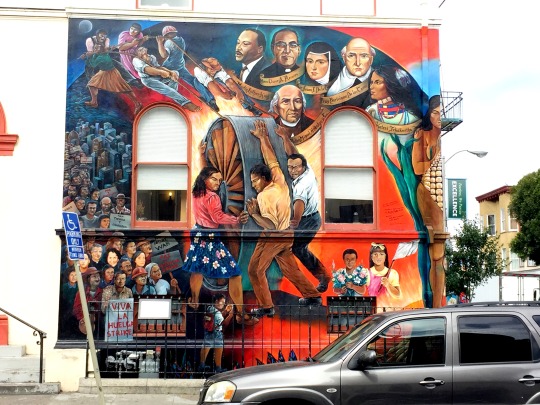
The idea of “insider and outsider” has been, in many ways, the crux of our travels. We asked questions and navigated our identity as visitor, as white visitor, as American, as woman. In our classrooms we are often the the outsiders to the communities in which we teach. However our ethnicities and upbringing reflect the dominant histories and tools that are demanded from dominant culture. In this unit, we hope to illuminate these walls, supporting students to name them, scale them, and ultimately paint them. As humanities teachers, we believe that providing students vocabulary and time to think and discuss the world and its issues leads to a brighter, more creative, and smarter future than the two of us can imagine. Solutions lie in the writing, in the art, in the conversations, and in the relationships that students create. Just as we wrote in our FFT proposal, students must see themselves reflected in curriculum, in physical space, and in pedagogy in order to be successful. Because we do not physically reflect our students’ identities, we think constantly about how to make all other facets of our teaching affirming. This unit and this project will be a launching point for discussions about personal identity, community, and what comes next.
In Mexico City, the San Francisco Bay Area, Los Angeles, San Diego, Tucson and Santa Fe, this fellowship made space for us to be learners. After the twelfth grade, those opportunities almost always come with one (or many) literal costs. And Fund for Teachers (along with the school year calendar) gave us the time, space and finances to learn more in a way that will support our students, but also in a way that sustains us as teachers, professionals, and individuals. It made it possible for us to end the trip feeling rejuvenated rather than depleted. There is a constant push for teachers to continue professional development; it is indeed essential. But driving this profession development experience (and literally driving more than 900 miles) meant that we could pace our learning and reflection, and that we could intentionally choose meaningful experiences that hit our “zone of proximal development.”
If you’d like to know more about our trip, we’ve been writing the whole time. Read our blog at www.writingisthinking.org
In Solidarity,
Kat + Alice
Alice is a 7th grade Humanities/Special Education teacher at the Lilla G. Frederick Pilot Middle School in Dorchester, MA. She infuses arts into her Humanities classes, most recently taking students to do pop-up Shakespearean theater in several Boston Public libraries. She works on a cross curricular team of teachers who study the intersection of English Language Learning and Special Education to build inclusive writing experiences in all contents.
Kat is a 7th grade Humanities teacher at Gardner Pilot Academy K-8 School, a Pilot School in the Boston Public Schools. Katharine was a 2012-13 Donovan Urban Teaching Scholar at Boston College where she earned her Master’s in Secondary Education. Prior to becoming a teacher, Katharine built a college access program in rural Pennsylvania that continues to help first generation and undocumented students find the appropriate post-secondary fit while developing college and financial literacy
within the community.
Today California’s state legislature will officially apologize to Japanese Americans sent to internment camps during World War II. This aspect of World War II is one many students don’t learn about during history classes, but one that many FFT Fellows seek to understand and share. Today, we share the learning of Timothy Nagaoka, whose grandfather fought for the United States in the European Theatre during the war.
[minti_divider style=”3″ icon=”” margin=”20px 0px 20px 0px”]
I teach Japanese as a foreign language to elementary and middle school students, many of whom come from immigrant families. Some families are from Central and South America, some from the Caribbean Islands, and others from Southeast Asia. I share this heritage. I grew up in Japan. My mother is sansei (third-generation Japanese American) from Hawaii; her father, a nisei (second-generation Japanese American), was one of many Japanese Americans on the island who enlisted after Pearl Harbor. He wanted to prove his loyalty to the country that had become very suspicious of his people, so he fought with other nisei from Hawaii in the 100th Infantry Battalion, which became one of the most decorated in military history.
Growing up, I heard my grandfather tell stories of fighting in Europe in World War II. Not until much did I learn of another battle fought by Japanese Americans on the mainland. It was not a battle of bombs and bullets, but a battle of patience and perseverance. Like my grandfather, who demostrated his patriotism by enlisting, many Japanese Americans proved their loyalty by enduring relocation to internment camps.
To fully understand and better teach this period of American history, I designed my Fund for Teachers fellowship to explore the Japanese American experience during World War II and – more specifically – the US government’s handling of these citizens.
I drove 3,500 miles through 8 Western States over 11 days to research 10 monuments and former internment sites. I also stopped at the Japanese American National Museum in Los Angeles (where I took a selfie with George Takai). An unplanned experience was attending the Annual Pilgrimage at Heart Mountain Relocation Center in Wyoming, where we honored those who who advocated, resisted and fought for Japanese Americans. It was this stop where I met former Secretary of Transportation Norman Mineta and Senator Alan Simpson.
Throughout my fellowship, I focused on two topics:
• What Japanese Americans endured throughout relocation, and,
• How relocation of the Japanese Americans is remembered today.
During the fellowship, I filmed interviews with former internees about their experiences, which I’m using as resources with students and colleagues. I am also designing two curricular units that teach about the Japanese American internment experience: one for Japanese language teachers that incorporates phrases and dialogues used in camps; and one for English Arts and Social Studies teachers who want to teach about the topic. Upon completion, I will offer workshops throughout Boston Public Schools and through local non-profit teacher training organizations.
In my classes, I’m using the knowledge and connections I gained through my fellowship to teach about the forced internment of Japanese Americans during the war. Previously, I’ve taught Japanese customs, traditions, history and culture, but I’d never considered teaching the Japanese American immigrant story. I now incorporate into my language lessons words and phrases, such as gaman (perserverance) and shikata ga nai (can’t be helped), that were often used by the Japanese Americans to describe their confinement. I’ve come to understand that by teaching my culture’s extraordinary circumstances, I can deepen connections with students whose lives reflect similar themes, old and new.
On January 2nd, 1945, restrictions preventing resettlement in the 100 mile Exclusion Zone along the West Coast was removed. I believe a strong democracy lies in not forgetting the past, especially not the mistakes. My fellowship researching the plight of tens of thousands Japanese Americans was humbling and allowed me to gain a more complete perspective of the American immigrant experience. I am using this perspective to better understand (and teach) my students from immigrant families themselves.
[minti_divider style=”1″ icon=”” margin=”20px 0px 20px 0px”]
Timothy Nagaoka teaches Japanese in six schools around the greater Boston area and has dedicated his career to creating opportunities for students and colleagues to connect with Japan. In recognition of his work, Timothy has received the John E. Thayer Award from the Japan Society of Boston, and the Henry L. Shattuck Public Service Award from the Boston Municipal
Research Bureau.
Read about another FFT Fellow’s experience researching life in and around Japanese Relocation Camps in Utah and Colorado here.
Barbara Walters said, “Most of us have trouble juggling. The woman who says she doesn’t is someone whom I admire but have never met.” FFT Fellow Helen Dole, however, seems to be managing fairly well. Helen teaches sixth grade at Lower Manhattan Community Middle School in New York City. With her teammate Molly Goodell, she and five-month-old daughter Sophie Tilmant set off for Alaska this summer to tour boreal forest, coastal, tundra, and glacial ecosystems and collect first-hand evidence of climate change for a sixth grade unit called Human Impacts. She shares some of her experiences below…

An educator in Denali shares with us about the methane that is being released as a result of permafrost melting.
We teach in a school that has students from a wide range of socio-economic backgrounds. Some students have second homes in the Hamptons, while others have grandparents/aunts/uncles cousins all under the same small roof in Chinatown. We previously did a Human Impact project; students relied on internet searches to source information. Now we have brought real data; photos, interviews, and our stories to ALL of our students–we are bringing the world to them even if they have yet to board a plane.
I now see the bigger picture in a deeper way and I’m more passionate about making my students ‘see’ it, too. It’s easy to read articles about climate change and cognitively understand what is happening. It’s an entirely different boat to stand by the sign showing where a glacier was just 10 years ago (and now it’s ice-free) and not viscerally feel how the world is being affected.

On our heli-hike adventure, we learned how about it’s not how warm it is, but rather the length of the growing season that is changing the vegetation.
Teaching is a joy and a grind. You are always “on;” engaging with students in person, families via email, via google docs with colleagues, or in person at staff meetings. This opportunity allowed me to turn my brain to a different mode from the regular routine. I was learning, yes, but in a more open and unencumbered way than the minute-by-minute schedule of a middle school environment. I landed back in NYC feeling enriched and invigorated for the year ahead.
Also, we experience the world through storytelling and now, our stories are going to be much richer and more vivid; filled with cutting edge science and personal anecdotes from our time in Alaska. They will be able to cite specific examples — equisetum plants spreading, the number of days above 50 degrees Fahrenheit North of the Arctic Circle, soil that doesn’t hold rain, roadways decimated from melting permafrost, increased frequency of wildfires, heavier snowfalls in winter, methane gas being released at an alarming rate, the list goes on — and then have teacher stories/images to connect to these sometimes hard-to-internalize science facts.
I went into this fellowship with the understanding that I was traveling with my co-teacher, Molly, and that we would strengthen our co-teaching skills on this trip. I didn’t know how much so, though! I traveled with my 5-month-old infant, so I relied on Molly in SO many ways for support and sanity. This journey to Alaska was like the ultimate trust-builder. If students thought we completed each other’s sentences BEFORE this trip, now they’re going to think communicate telepathically!
Additionally, living in a city, it is easy to go about my day and not feel fundamentally affected by climate change. My food, my transportation, my workplace, and home are all far enough removed from Mother Earth that I am not forced to see how climate change is a real thing affecting real people, animals, and plants. On this fellowship, I was able to witness how ice has shifted, plants and animals have migrated, and people have altered their ways of life because of a warming planet.
[minti_divider style=”3″ icon=”” margin=”20px 0px 20px 0px”]
 Helen is in her 15th year of teaching. She is a New York City Teaching Fellow, Math for America Master Teacher, and former Department of Energy Teacher as Scientist. She believes in helping students to see science in their everyday lives; continually striving to make connections between their world and the science they are learning about. Outside the classroom she is a passionate runner. She’s a proud mom to two young children.
Helen is in her 15th year of teaching. She is a New York City Teaching Fellow, Math for America Master Teacher, and former Department of Energy Teacher as Scientist. She believes in helping students to see science in their everyday lives; continually striving to make connections between their world and the science they are learning about. Outside the classroom she is a passionate runner. She’s a proud mom to two young children.
“The congratulations email we got from Fund for Teachers on April 4 about our grant said “This is just the beginning…” Little did we know how true that sentiment was…”
So began the note from 2019 FFT Fellow Kelly Whitaker. She and team mate Sherry Grogan (Monroe Area High School – Monroe, GA) designed their fellowship to collect data and capture 360 video in the Galapagos Islands to inspire scientific field experiences in Georgia that culminate in student presentations at elementary and middle schools intended to pique student interest in biology. Now, photos from their fellowship will also help fund conservation efforts of the Islands.
“My team member, Sherry Grogan, submitted some photos to the photography competition for the Galapagos Conservancy. She was notified this weekend that one of her photos of a lava lizard (above) had received an Honorable Mention and will be in the 2020 calendar.”
Read on to see more of “Team Darwin’s” adventures:
Sherry: “I pushed the limits of my comfort zone routinely while in the Galapagos. I learned to snorkel and engaged with land and sea creatures while shooting 360 videos and taking pictures. Learning in this manner has shown me the importance of capturing student interest in every unit and I feel that I am better equipped to make this happen after the fellowship. Students will surely perform higher in the evolution unit with newly designed lessons of 360 VR experiences and having studied Darwin’s work.”
Kelly: “As my teammate said, ‘We showed up as teachers and we are leaving as students. Our ‘I wonder…’ list is a mile long; our confidence has exploded; our friendship bond is rock solid. The emotional impact was more than I could have imagined. I sat in a panga with six other people with tears rolling down my cheeks at my first sighting of a blue footed booby. I found out that I can’t cry and snorkel at the same time, when I was bobbing in water with penguins.”
Sherry: “I will be entering my 22nd year of teaching next year. This fellowship has completely overhauled my passion for teaching and finding ways to spark interest in my students. I have already tentatively created a plan for involving some portion of the “Galapagos” in each unit. I think this recurring theme will brilliantly help the students learn about such a fascinating place on earth, while also mastering the standards in Biology.”
Kelly: “Our students are going to see our excitement and come up with their own ‘I wonder…’ lists. Our students will be able to ‘visit’ the Galapagos using our 360 video and still shots. They will have a connection to this material that they didn’t have before. We are already looking at the photos we want to exhibit in the elementary schools and middle schools. Our students will have a different level of engagement due to this connection.”
Sherry: “With all of the footage we shot (i.e., 360 video, photographs, 360 still photos, etc), we have a new approach to many of our units. The photos will come to life in the classroom through the eyes of two very enthusiastic teachers who absolutely cannot stop talking about this trip with friends and family. I learned so much about myself as a teacher, reevaluated my students, and I am prepared to provide a growth opportunity for all students in my room with exciting new material!”
Kelly: “We wrote a grant for mini journals for every student, as well as for field trips to the state park and the Atlanta Botanical Gardens. Sherry’s winning photograph with the Galapagos Conservancy inspired us to have a photo competition among our students. Our media specialist printed the winning photos and our principal ended up paying to frame them! (That’s the water lily picture below).
We also worked in some interdisciplinary activities. We invited the art teacher in to teach a mini-lesson in nature sketching. Our favorite language arts teacher taught a mini lesson on descriptive writing. And our math teacher did a lesson on data collection and also designed a geometry lesson for a putt putt golf course.
Lastly, while writing our grant proposal, we reached out to our mayor. This connection built a relationship and we felt completely comfortable inviting him in to our class to have a forum with our students about environmental decisions in our town. How cool is that? We presented him with the winning photo from the photo competition and he took it to city hall where it was displayed for a month. All because of the connections made during the development of our grant proposal.”
[minti_divider style=”1″ icon=”” margin=”20px 0px 20px 0px”]
Sherry Grogan has taught high school biology for 20 years after spending 8 years as a police officer. Dr. Kelly Whitaker is a special education co-teacher in Biology and Physics. Her previous summer adventures include riding a motorcycle, solo, across thirty states and 16,000 miles; hiking 500 miles across Northern Spain on the Camino de Santiago and climbing Mt. Katahdin. To order the Galapagos Conservatory’s 2020 calendar featuring Sherry’s photographs from her fellowship, click here.
On this day in 1945, an atomic bomb flattened Hiroshima – one of two bombings that induced the Japanese to surrender and end World War II. FFT Fellow Kelly Loubier (Orville H. Platt High School-Meriden, CT) participated in the anniversary ceremonies at the Hiroshima Memorial Peace Park, where she also delivered to the Children’s Memorial paper cranes folded by her students in keeping with the novel Sadako and the Thousand Paper Cranes.
Kelly designed this fellowship to document the nuclear legacy in Nagasaki, Hiroshima, Osaka and Fukushima and demonstrate how these events continue to impact citizens and the greater world community in relation to policy decisions regarding war, nuclear weapons, nuclear energy, peace and disaster relief.
She continues to share experiences on her Instagram and we’re honored to include a portion of her learning below in recognition of this momentous day in history…
[minti_divider style=”3″ icon=”” margin=”20px 0px 20px 0px”]
[minti_dropcap style=”circle”]I[/minti_dropcap] headed to the memorial service this morning around 7:30 and I joined crowds of people who I thought were just going to work. I was so wrong about that. They were all headed to the cenotaph and the ceremony at 8 am. I read online afterwards that 70% of all citizens of Hiroshima have attended a memorial service for the atomic bomb victims. It’s not a recognized day off, so kids still have school, men and women still go to work. The ceremony took place from about 8-8:45 and it included adding names to the cenotaph, a moment of silence at 8:15, an address from the mayor renewing calls for peace and decrying nationalism and addresses from students. They also sang a song of peace and released doves. After, people lined up to deliver flowers and offer a prayer. It’s 2pm and there is still a line. There have been groups promoting peace and youth groups, high schools and universities teaching people about the atomic bombs and interviewing others about peace in the park. More cranes are being brought to various monuments and people are purchasing lanterns for later. The sense of community is unreal, even 74 years later.
[minti_dropcap style=”circle”]O[/minti_dropcap]ne of my major take aways from Hiroshima is that the knowledge about the atomic bomb is so ingrained in the fabric of the city that it isn’t something that just happened in the past and that’s it. It’s something that the people of Hiroshima must learn about and teach others about so that we as a global community don’t let it happen again. There were so many people in the park today, but what really amazed me was the amount of students involved. The Boy Scouts handed out programs and cold towels before the ceremony. Sixth graders gave the children’s address during the ceremony and other students sang or played music. A group of fourteen year old girls gave me a peace declaration their high school drafted. University students interviewed me about peace. Other kids were involved in music, tours, tea ceremonies, peace demonstrations, delivering cranes, reading Sadako’s story (in English and Japanese) and presenting their art. So many families were out with their young children tonight helping them to send out lanterns, color wax candles and present flowers and prayers to the cenotaph. My mind has constantly been thinking of the Margaret Mead quote, “Never doubt that a small group of thoughtful, committed citizens can change the world; indeed, it’s the only thing that ever has.” The people of Hiroshima are leading the charge to a more peaceful world.
[minti_dropcap style=”circle”]T[/minti_dropcap]he face you make when a small Japanese woman grips you by the hand, puts you in a line of other confused foreigners, and puts a necklace of paper cranes around your neck. Turns out, I was given a Croatian flag to wave and lead the crowd in a prayer for peace for Croatia. All countries were represented. The artwork pictured represents 193 countries, their flags and a message of peace in their language.
[minti_dropcap style=”circle”]I[/minti_dropcap]want to give thanks to Yuji @fellanandez_tokugiwa and Holly @hiroshimayasuko from @magicaltripcom for a wonderful tour of the Hiroshima Peace Memorial Park and the pictures. I learned quite a bit during the Heiwa Walking Tour that I’m looking forward to bringing back to my classroom and the Meriden community. I learned a lot today and I’m still trying to process everything and put it into words. I did go to the Children’s Peace Monument this afternoon to drop off the cranes. They’re in the second cabinet at the monument and I filled out a sheet so they will be recorded.
[minti_dropcap style=”circle”]I[/minti_dropcap]n Japan, the atomic bomb is taught with the stories of the people who were affected through their clothing, their pictures, their art and their stories. I learned that many of the victims were school aged children between the ages of 12-14. They had been reporting to school on August 6 at 8:15 am to clear buildings to create buffer zones in case of an air raid to prevent fires from spreading. Many of their stories are told in the Hiroshima Peace Memorial Museum, allowing visitors to bear witness and connect with the human aspect of this terrible tragedy. It is not until the end of the museum when you learn about the science of the atomic bomb, the reason it was used and what the global community did with nuclear weapons after World War 2. We need to teach these stories in the United States.
[minti_dropcap style=”circle”]T[/minti_dropcap]here is a rumor that persists that claims nothing would grow in Hiroshima for 75 years after the atomic bomb. I heard the rumor as a student and I still hear it from my students today. Hiroshima is actually very green and there are trees everywhere. This is because during the recovery period, citizens and organizations from Japan and the global community and governments around the world donated trees. There are also 170 Hibakujumoku (survivor trees) in various locations around Hiroshima that are marked with plaques. The organization, Green Legacy Hiroshima works to spread saplings from these trees around the world. I’d love to talk to @ctca19 in September more about this organization.
[minti_divider style=”3″ icon=”” margin=”20px 0px 20px 0px”]
Thank you, Katie, for the exemplary job you’ve done in designing, pursuing and sharing your learning with us. You can follow her entire fellowship on Instagram @kcloubier. Katie teaches 9th grade world history and 11 and 12th grade human rights at O.H. Platt High School in Meriden, Connecticut. As a third year teacher, she believes that students should walk away from her classroom with a greater understanding of the world around them. She has worked with exchange students from around the world and traveled to places such as Egypt, El Salvador and Iceland, bringing her experiences with her into the classroom.
 Fund for Teachers invites PreK-12 educators to design learning adventures wherever their imaginations can take them, which is the same thing author Mary Pope Osborne does for young readers through her Magic Tree House series. These award-winning books transport main characters Jack and Annie on quests that pursue people and topics they previously only read about.
Fund for Teachers invites PreK-12 educators to design learning adventures wherever their imaginations can take them, which is the same thing author Mary Pope Osborne does for young readers through her Magic Tree House series. These award-winning books transport main characters Jack and Annie on quests that pursue people and topics they previously only read about.
This summer, librarian Riley Grant (Pelzer, SC) is writing her own learning adventure and is bringing Jack and Annie along. We caught up with her (and Jack and Annie) as she’s investigating European settings found in the book series to produce springboard book trailers and book talks for project-based learning that helps students identify ways to explore and improve their community…
[minti_divider style=”1″ icon=”” margin=”20px 0px 20px 0px”]
So, I am half way through with the travel part of my Fund for Teachers Fellowship…it has been nothing short of incredible!!
It truly is all about relationships —
I have spent my adult life building relationships in my personal and professional life and I claim to know some of the best people in the world…honestly!! But, most of my relationships are contained in my small southern state. And, while that is very wonderful, I’m so glad to have this opportunity to build relationships around the world! It is through these relationships that I learn history, geography, cultural similarities and differences and most of all, how to be a good and kind friend.
I am a librarian in a rather rural elementary school but it is close to an up and coming large city. My dream is that by using literature, Project-Based/International Baccalaureate Learning projects, and videos from this fellowship, I can inspire my young students to build meaningful relationships in their small community, our large city, our beautiful state and the world!
To be honest, I’ve also learned a lot about myself. Last fall my principal asked to think of a word for our school year and I chose “execute”… as in “to make things happen.” I had heard about the Fund for Teachers program and decided I wanted to make that fellowship happen. I was nervous and after I pushed the submit button, I did nothing put doubt myself. And, the day the grants were announced, it was late in the afternoon before I received my acceptance email. But getting the fellowship was only the beginning! I overcame my anxiety about going to a country where I did not speak the language, getting lost in a foreign country, meeting total strangers, riding trains between countries and generally “executing” this project. I am truly humbled and proud to be a part of the Fund for Teachers Fellowship program.
Meanwhile I am living my dream of exploring Europe and meeting amazing people from Paris, London, and look forward to building relationships in Edinburgh, Belfast and Dublin.
Thank you, FFT!!
“I love teaching,” said Mary Pope Osborne. “It’s a job that lasts forever. Whatever you teach children today travels with them far into the future.” We agree and can’t wait to see where Riley, Jack and Annie take the students of Fork Shoals Elementary!
[minti_divider style=”1″ icon=”” margin=”20px 0px 20px 0px”]
Follow the rest of Riley’s Magical Mystery Tour on Instagram @graceorileysreadingclubhouse.
Alexander Graham Bell’s most well-known accomplishment is the invention of the telephone; however, his first job was as a teacher. In fact, he was teaching at the Boston School for Deaf Mutes when he began creating a machine that changed the way we communicate forever.
Deborah Tubbs and Dana Smith share a lot in common with Bell: They are deaf education teachers and are also intent on changing the way their second- and third-graders not only communicate, but also integrate and socialize with their hearing peers. Ostensibly our most excited grant recipients judging from this video, Deborah and Dana designed their fellowship to attend the AG Bell Association for the Deaf‘s Global Listening and Spoken Language Symposium in Madrid.
In advance of the symposium, Dana and Deborah toured London schools with programs similar to theirs and with whom their students interact via a pen pal program. En route to Spain, they visited the National Institute for Young Deaf in Paris, established in 1760 as the first public school in the world for deaf students.
We caught up with Dana and Deborah in Madrid as their fellowship is drawing to a close…
[minti_divider style=”3″ icon=”” margin=”20px 0px 20px 0px”]
“Deaf Awareness. Not just for a select few but for the entire staff and student body, including our students who are deaf. Everyone needs to understand and appreciate the potential challenges that can arise when communicating with individuals who are deaf. And it is up to all parties to anticipate and recognize when they occur in order to overcome them. For our students who are deaf, they must learn to advocate for themselves.”
“As we come back to Davis Elementary School in Plano, TX and apply what we have seen and learned, our students who are deaf will become more confident in who they are and how they communicate. Our short term plan for our own learning goals can be summed up in two words: learn and connect. Each leg of our fellowship is providing us with both of these opportunities. We are learning from and and connecting with our historical predecessors, our British colleagues and our global professional mentors. Long term, we’ll use these unique experiences to help students become more confident in challenging listening situations, develop skills necessary to repair communication breakdowns, and evolve from a fixed mindset, where they are too intimidated to speak up for their communication needs, to a growth mindset, where they recognize the challenges they face and have the tools and strategies they need to become successful and effective communicators.”
[minti_divider style=”3″ icon=”” margin=”20px 0px 20px 0px”]
Follow the remainder of this fellowship on the teachers’ Instagram feed @deborah_dana_fft.
In honor of Mahatma Gandhi’s birthday today, we share the thoughts of teachers who analyzed his practice of ahimsa, or non-violence on their 2015 FFT fellowship. Katie Seltzer and Eric Berge spent five weeks in India learning about the teaching of non-harm present in Jainism, Hinduism, and Buddhism. They share some of their experiences and insights below:
[minti_dropcap style=”circle”]Q[/minti_dropcap] Can you briefly describe your fellowship — where you went and why?
[minti_dropcap style=”circle”]A[/minti_dropcap] We were truly immersed in the culture of non-violence during our participation in the International School for Jain Studies Teaching for Peace Program by living, (even eating!) and studying nonviolence. Additionally, with our side trip to Varanasi, we explored the Buddhist roots of nonviolence in India by visiting Sarnath, the site of the Buddha’s first sermon, where he taught the origins of suffering and the method for overcoming suffering. In Varanasi, we explored the Hindu practice of cremation on the sacred Ganges River—a returning of body and soul to the earth in a non-violent burial practice. From these experiences, we deepened our understanding of ahimsa through the study of Gandhi’s writing and visiting his home in Mumbai, his home in New Delhi and site of his assassination, and the site of his cremation. We were impressed with Gandhi’s commitment to simple living, exemplified by the exhibit on his few possessions. The inspiration for our learning was to determine how schools and students can be agents of peace in the midst of diverse cultures and religious illiteracy.

On the Ganges River in Varanasi.
[minti_dropcap style=”circle”]Q[/minti_dropcap] How did your fellowship translate to the classroom?
[minti_dropcap style=”circle”]A[/minti_dropcap]
Eric: I incorporated the religion of Jainism into my teaching of World Religions. In India, we had the opportunity to learn about the Jain teaching of nonviolence directly by spending a month living in Jain communities. Students were fascinated to learn about how the Jain teaching of nonviolence extends to animal and plant life. I shared with students the strictures of the Jain vegetarian diet—eating no meat, leafy green vegetables, and root vegetables. I had the students read the story of the Mango Tree, which we learned about in India, to teach about why Jains follow this diet. Students read the story, which talks about a group of friends walking through the forest and encountering a mango tree. In order to get the mangos, one friend suggests cutting down the tree, another cutting down a branch, and another picking the mangos off the tree. However, the final friend tells them that if they look around, there are enough mangos on the ground to feed all of them. This friend illustrates ahimsa by limiting his harm of the natural world, and ensuring that there will be enough for everyone to go around. We also learned about the Jain commitment to nonviolence by learning about the lives of Jain monks. After watching an Indian cartoon about Mahavir, the founder of Jainism, and his commitment to nonviolence, students looked at photos of Jain monks and nuns that I took in India. I shared stories of the Jain monks that we met, and we watched a short video I filmed of a woman taking the vows to become a Jain nun. Students then reflected on what Jainism can teach them about nonviolence. Students realize that nonviolence can include what we eat, how we interact with others, and living simply. These Jain truths are relevant to all students regardless of religious traditions.
Katie: I incorporated my experience of Gandhi into my teaching of Religion and Social Justice. We begin by studying the life of Gandhi through images of him, a brief documentary on his movement, and primary source documents, including his own writings. Students explore how nonviolence is an active, not a passive, method of working for social change. A new student project has students find their own injustice in society and create the idea for a nonviolent movement to address the problem, using the methods of Gandhi. Additionally, students look at how Gandhi’s methods can help them resolve conflicts in their own lives. We watch a Bollywood movie, Lage Raho Munna Bhai, about Gandhi coming back to life to teach a mobster about how ahimsa is more powerful than physical force. The humorous movie builds on the concepts of Gandhi that students explore earlier in the unit. The students then work on applying Gandhi’s techniques in case studies of interpersonal conflicts and then to conflicts in their own life. The goal is to make Gandhi’s teachings of ahimsa relevant, and have his movement educate a new generation of students.

Katie and Eric pictured with FFT Fellow Monica Shah (Chevy Chase, MD) who participated in the same nonviolence immersion program at the Mahaveer Public School in Jaipur.
[minti_dropcap style=”circle”]Q[/minti_dropcap] What do you consider the lasting impact of your learning in India?
[minti_dropcap style=”circle”]A[/minti_dropcap]In a sense, words fail to describe how fully we were able to deepen our study of ahimsa by experiencing it in our daily life. We maintained a strict vegetarian diet, which may not sound life-altering, but the impetus behind it (that non-violence starts with how you sustain your life at the most basic level) is a completely different world view from an American one. Participating in the ISJS Teaching for Peace Program enabled us to live as and among Jains who are firmly committed in all that they do to reducing violence in the world. While we won’t be testing our students on how to be vegetarian, we will be better equipped to answer questions about belief-systems that are so radically different from mainstream American views. Our fellowship enabled us to meet and with students, teachers, monks and lay people daily striving for ahimsa. Their example became an example to us—ahimsa made visible in their welcoming of us and their daily practices. So our main take away from the fellowship really came from those whom we met as living examples of Gandhi’s quote: “There is no path to peace, peace is the path.”
[minti_divider style=”1″ icon=”” margin=”30px 0px 30px 0px”]
 At the time of their fellowship, Eric and Katie both taught at Cristo Rey New York High School in Harlem, but have since moved to Portland Oregon and teach at Valley Catholic High School and Oregon Episcopal High School, respectively. They are proud that that their fellowship is affecting three schools on two coasts. Eric received his BA in Religious Studies from Gonzaga University and an MS in Conflict Resolution from Portland State University. Katie is a graduate of the College of the Holy Cross and Harvard Divinity School.
At the time of their fellowship, Eric and Katie both taught at Cristo Rey New York High School in Harlem, but have since moved to Portland Oregon and teach at Valley Catholic High School and Oregon Episcopal High School, respectively. They are proud that that their fellowship is affecting three schools on two coasts. Eric received his BA in Religious Studies from Gonzaga University and an MS in Conflict Resolution from Portland State University. Katie is a graduate of the College of the Holy Cross and Harvard Divinity School.